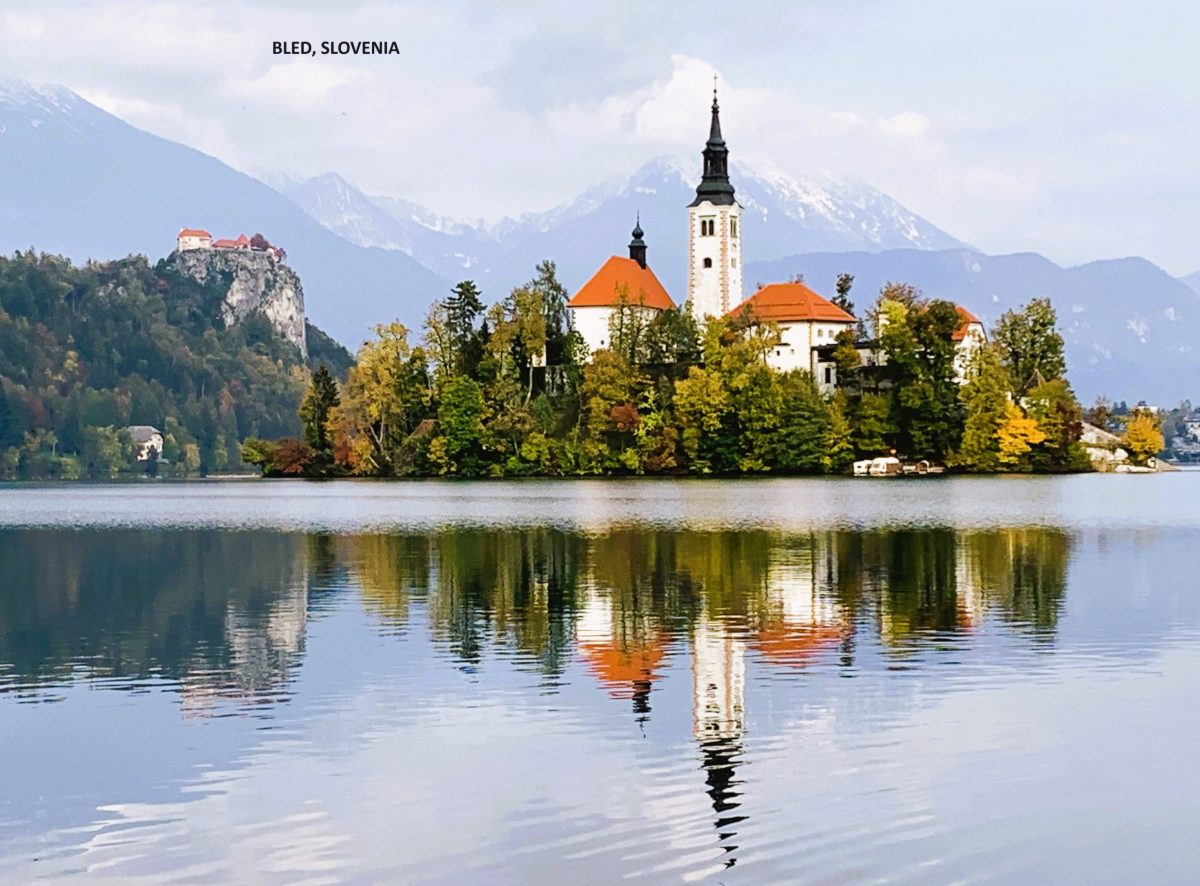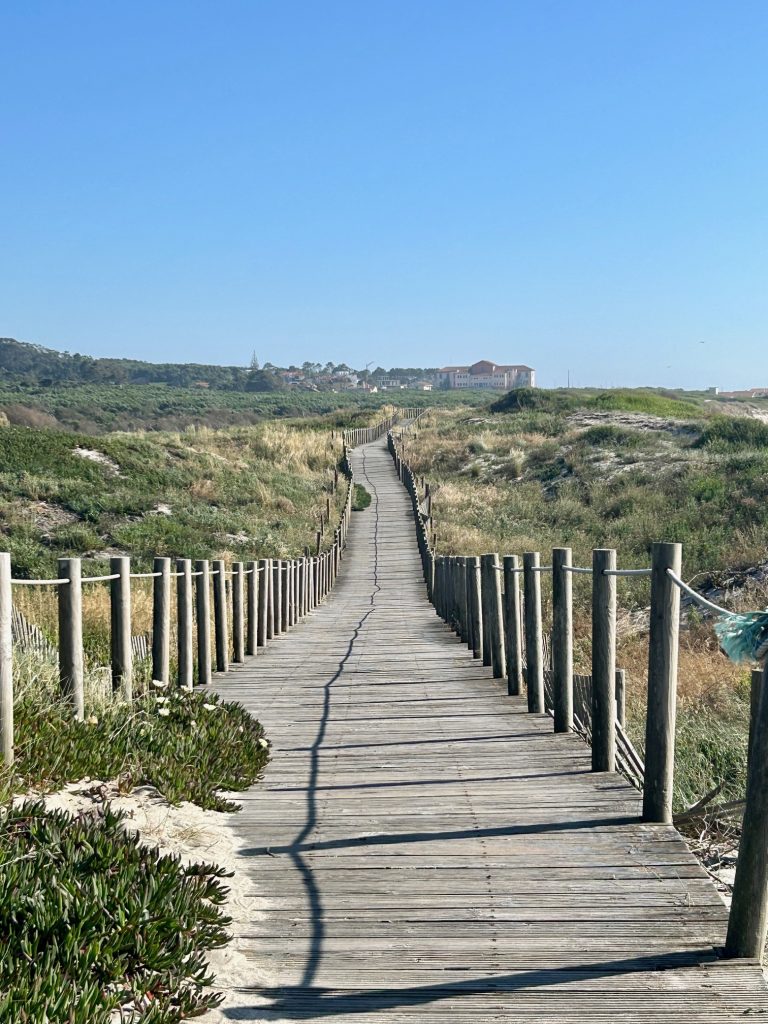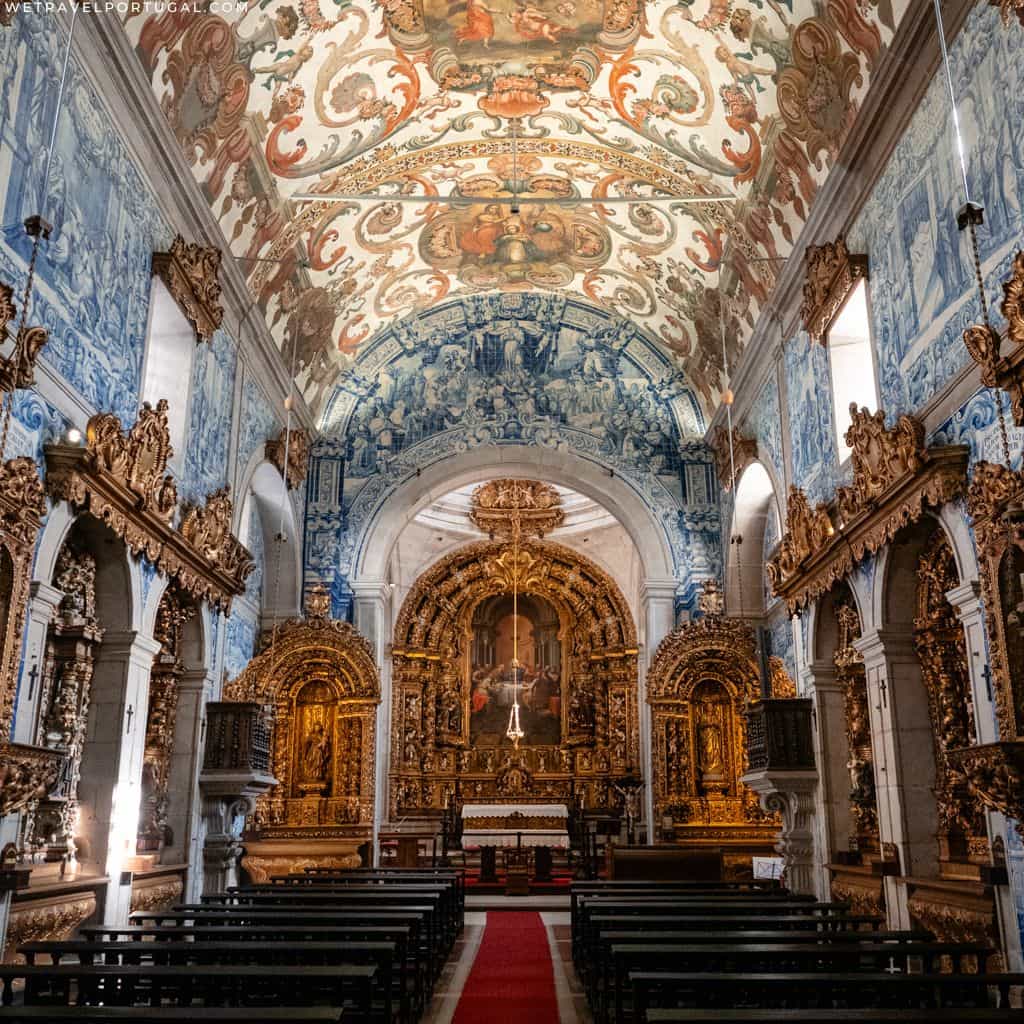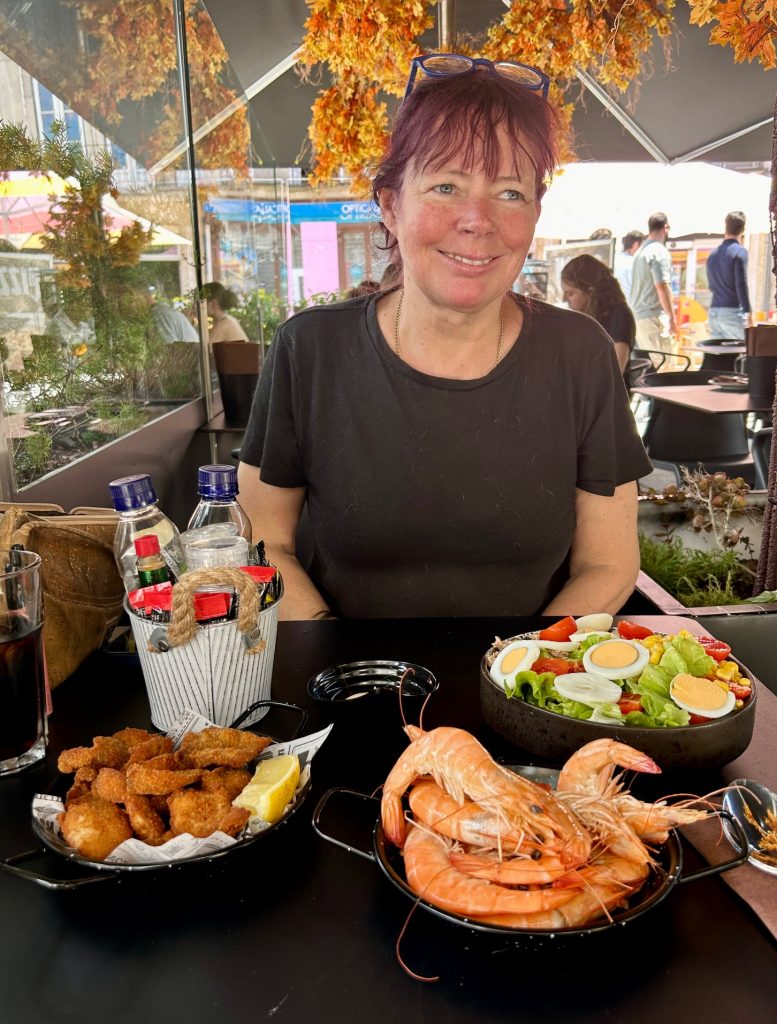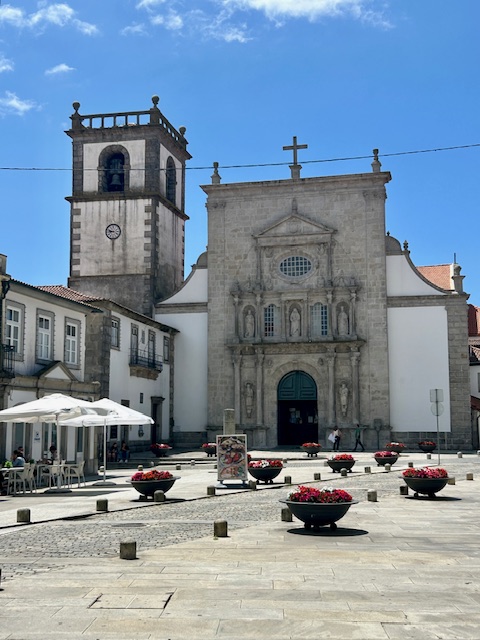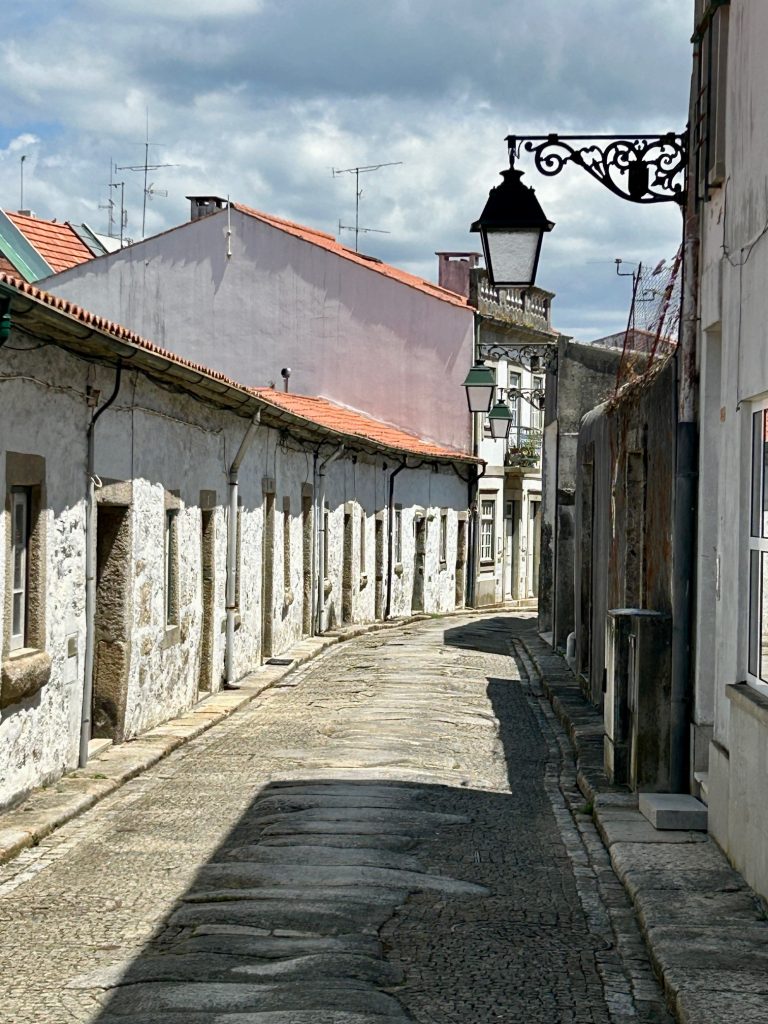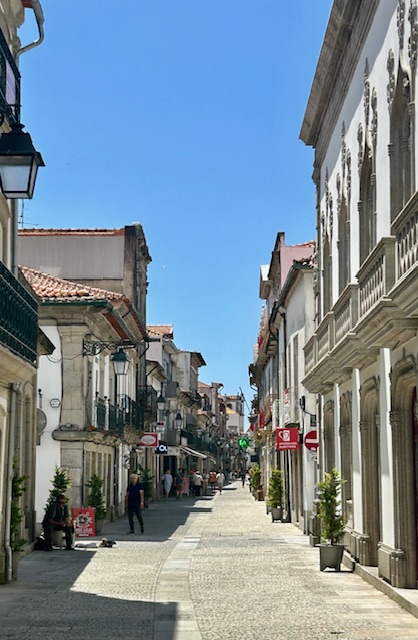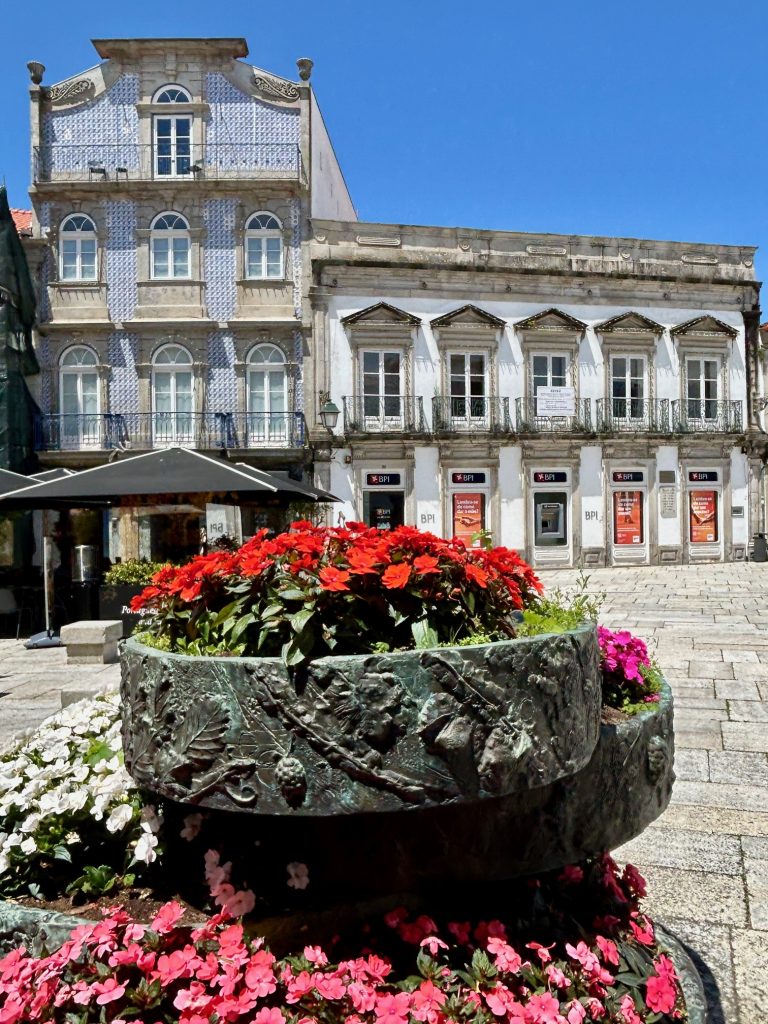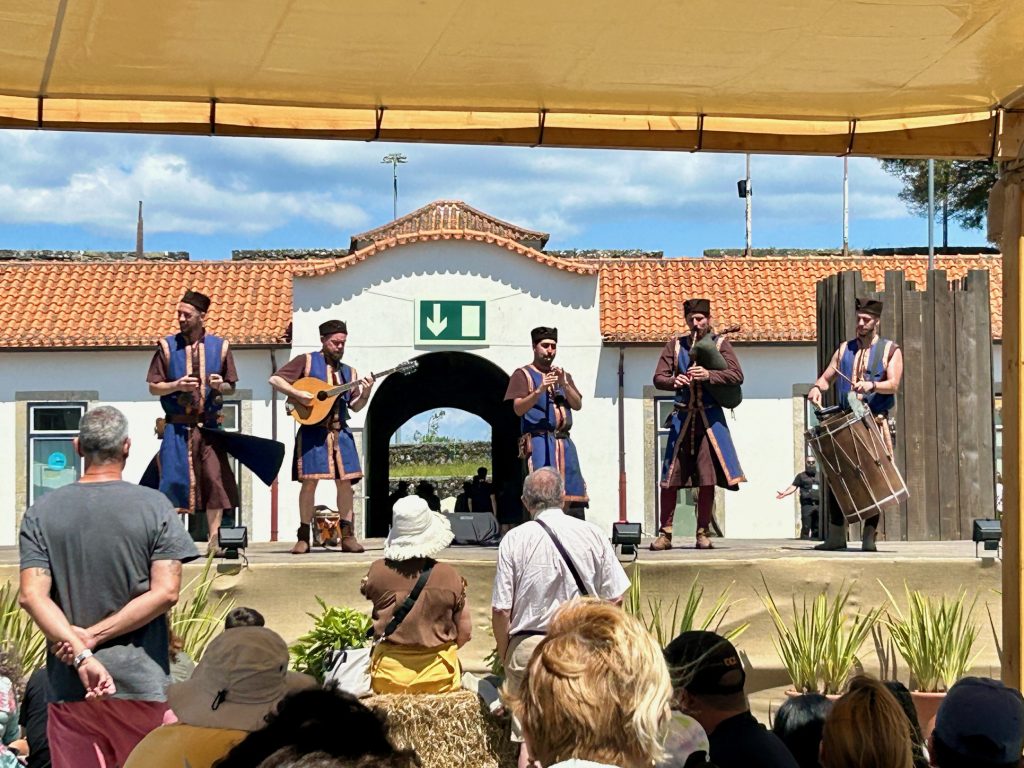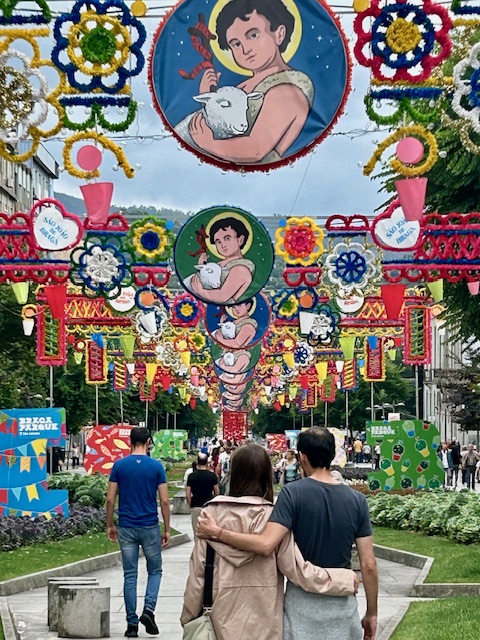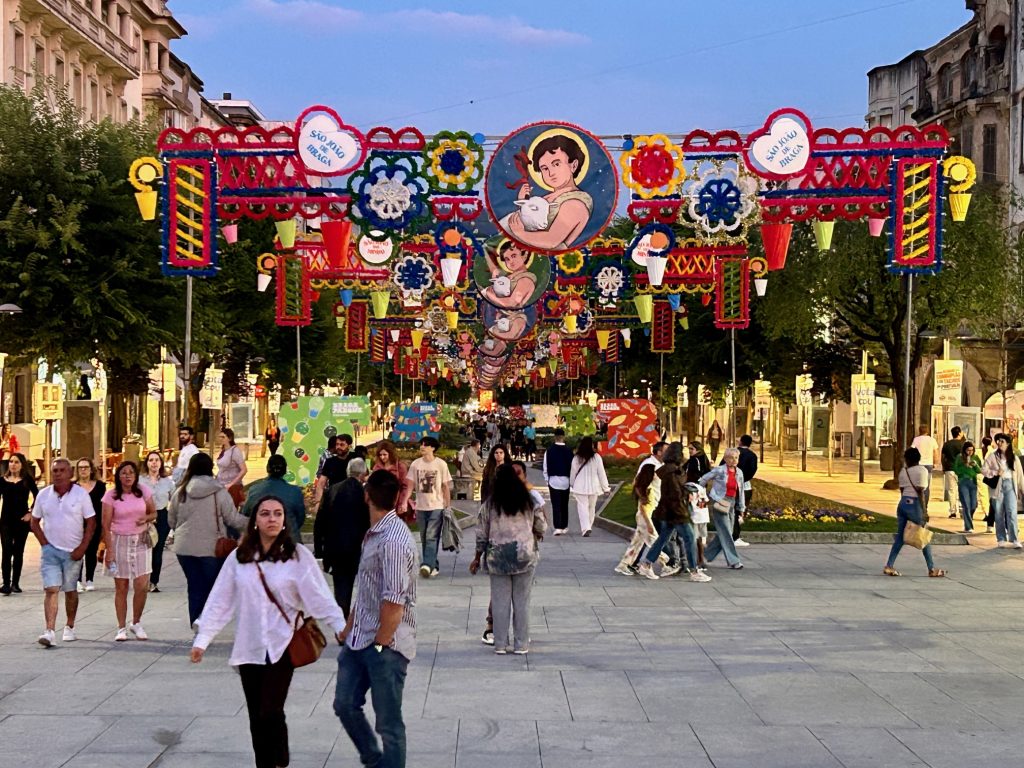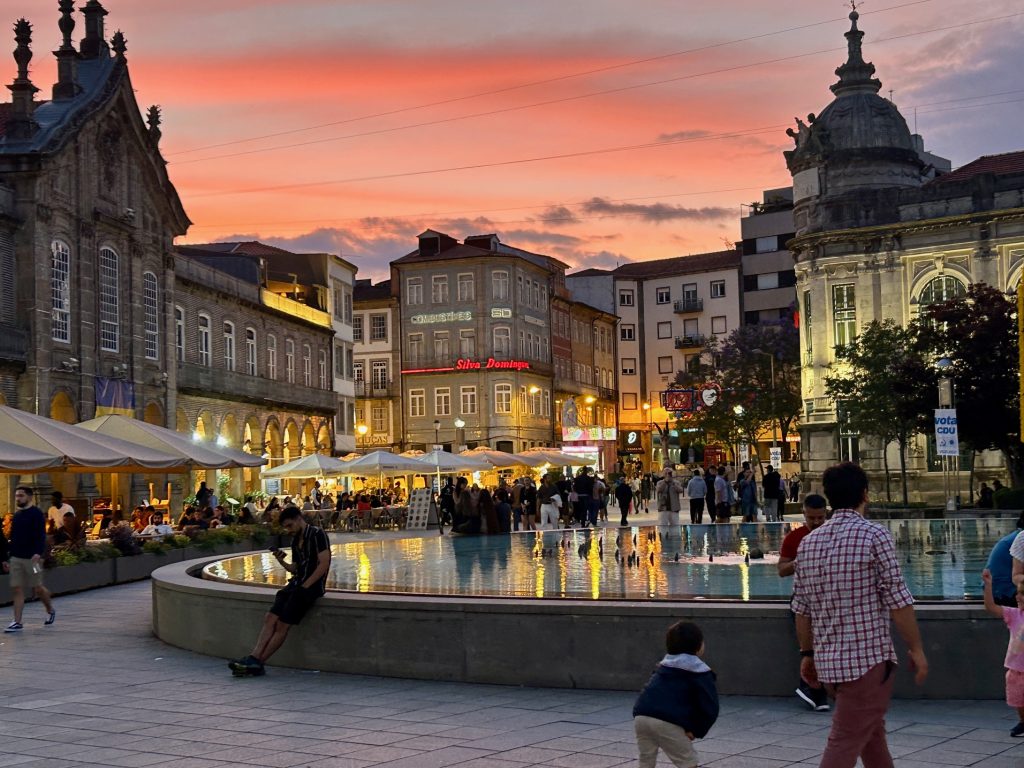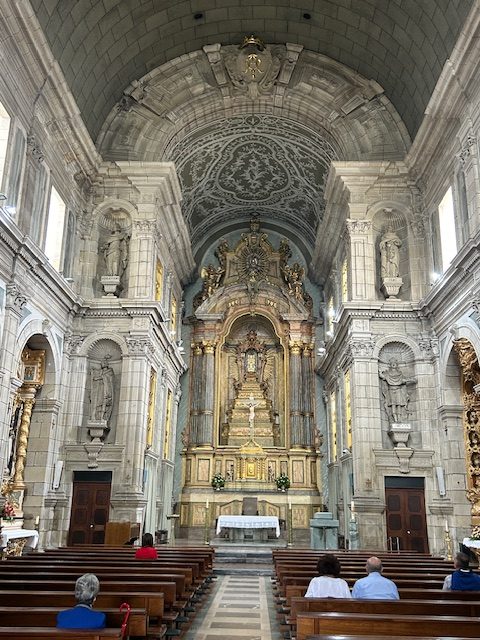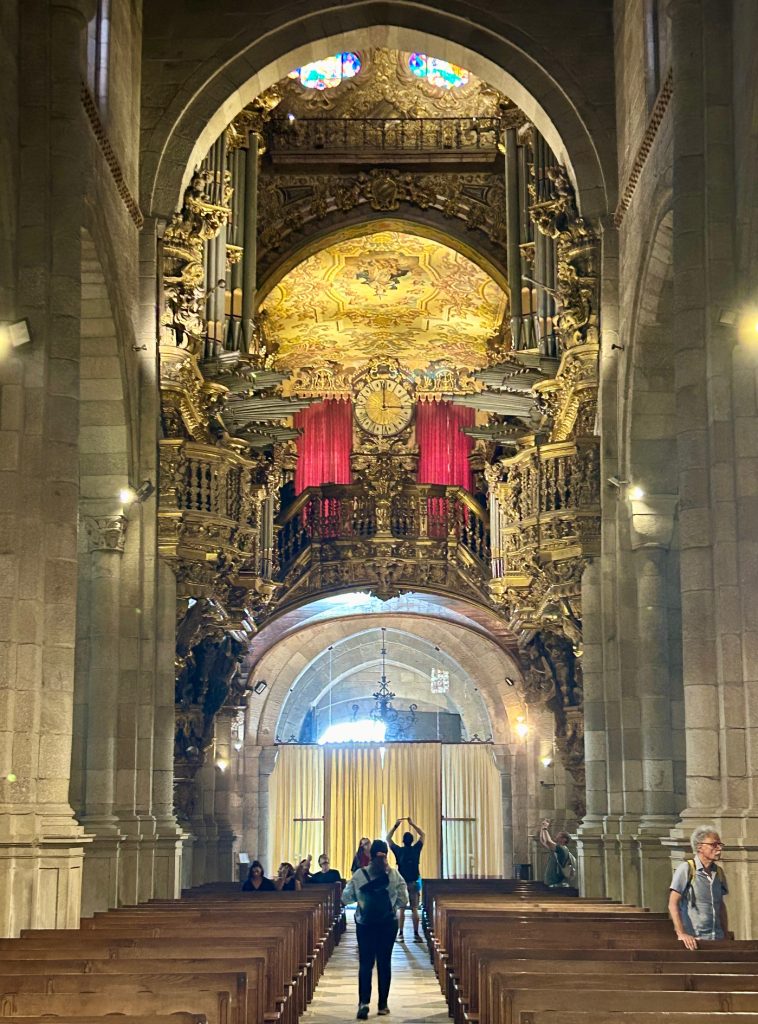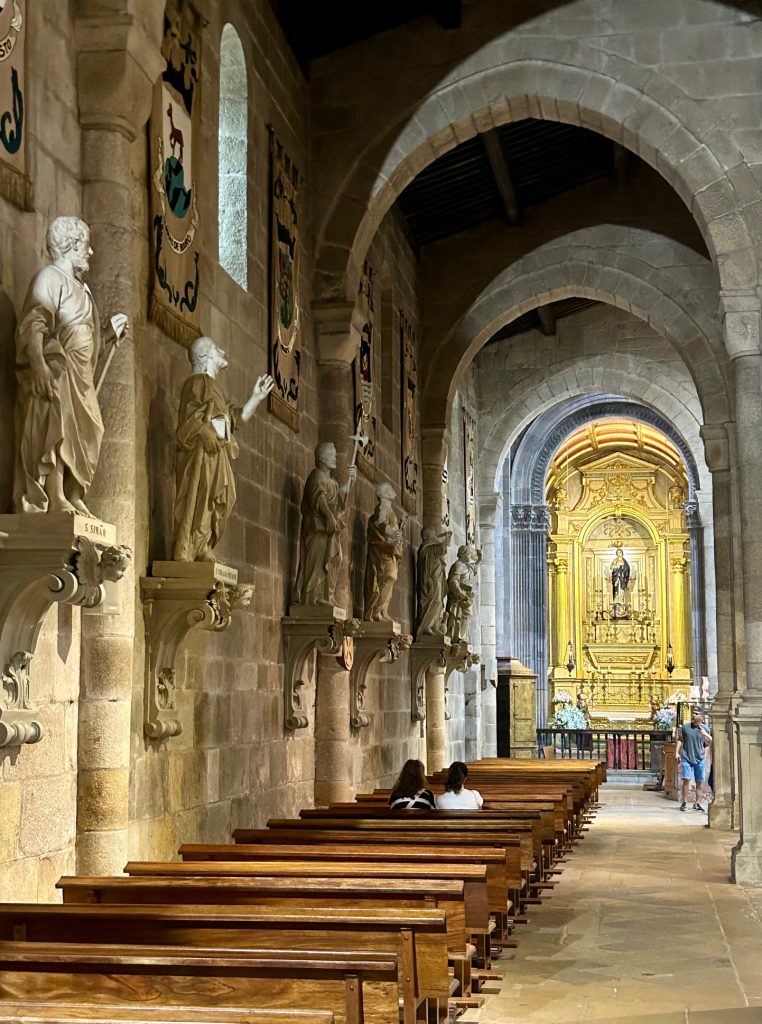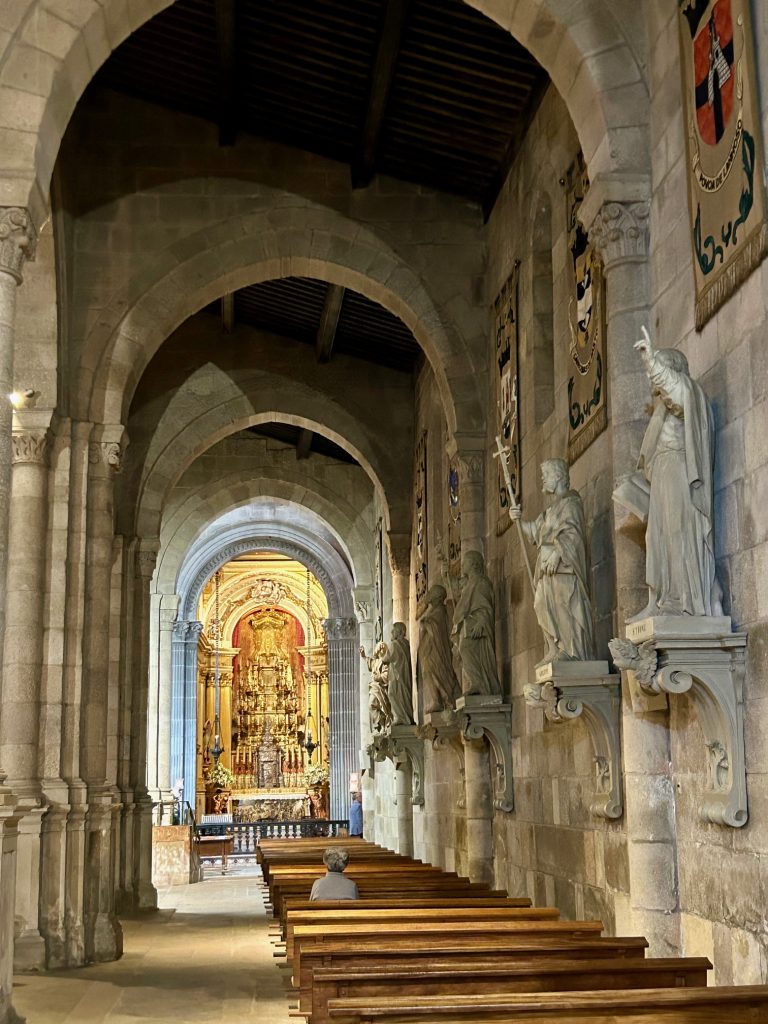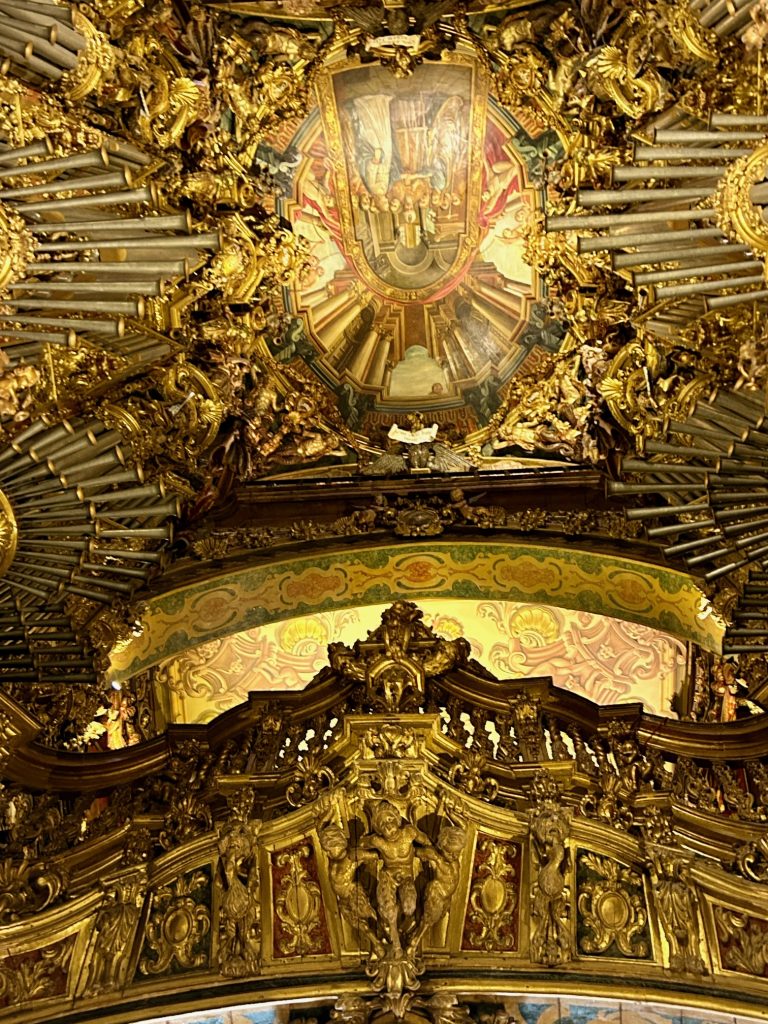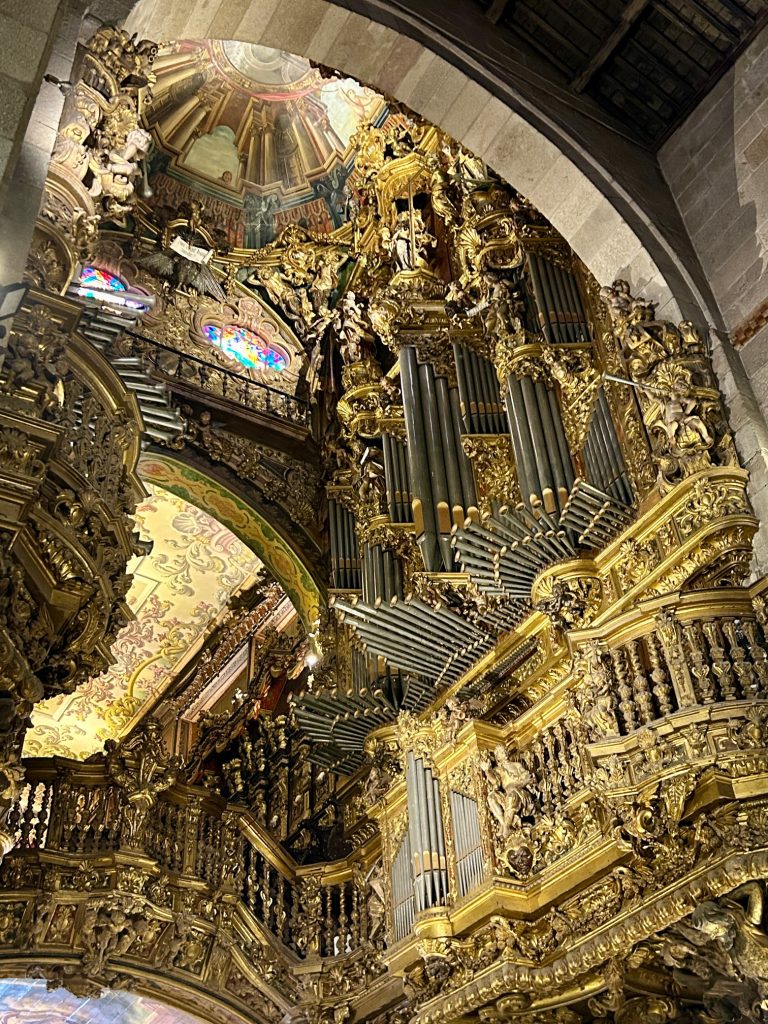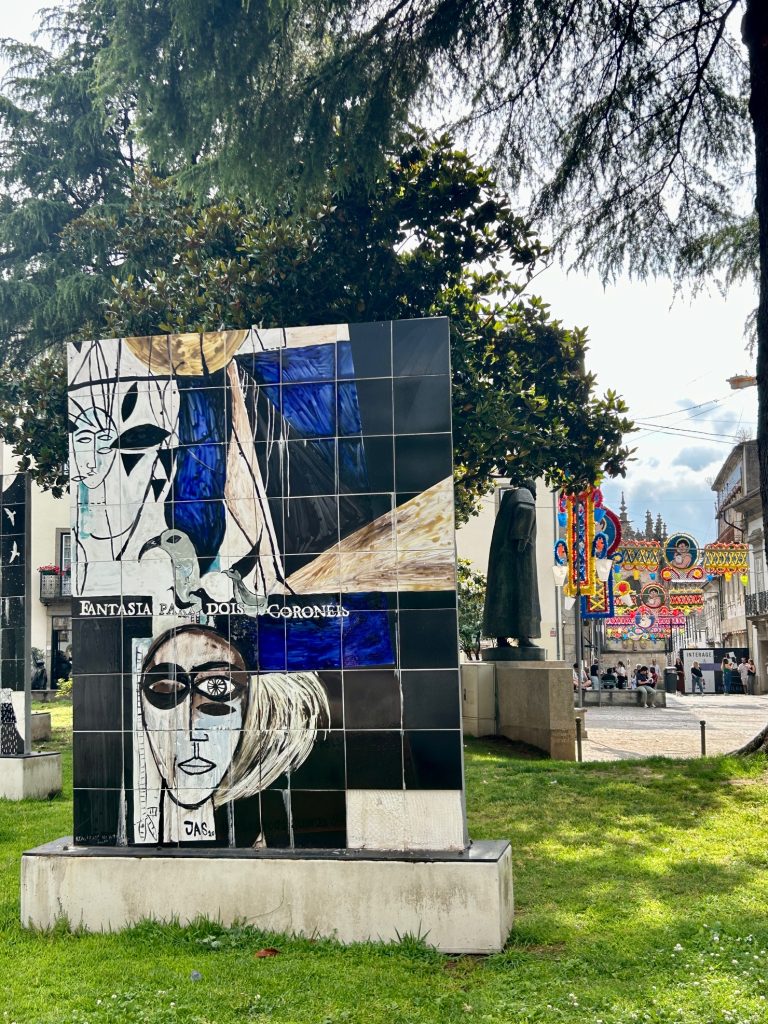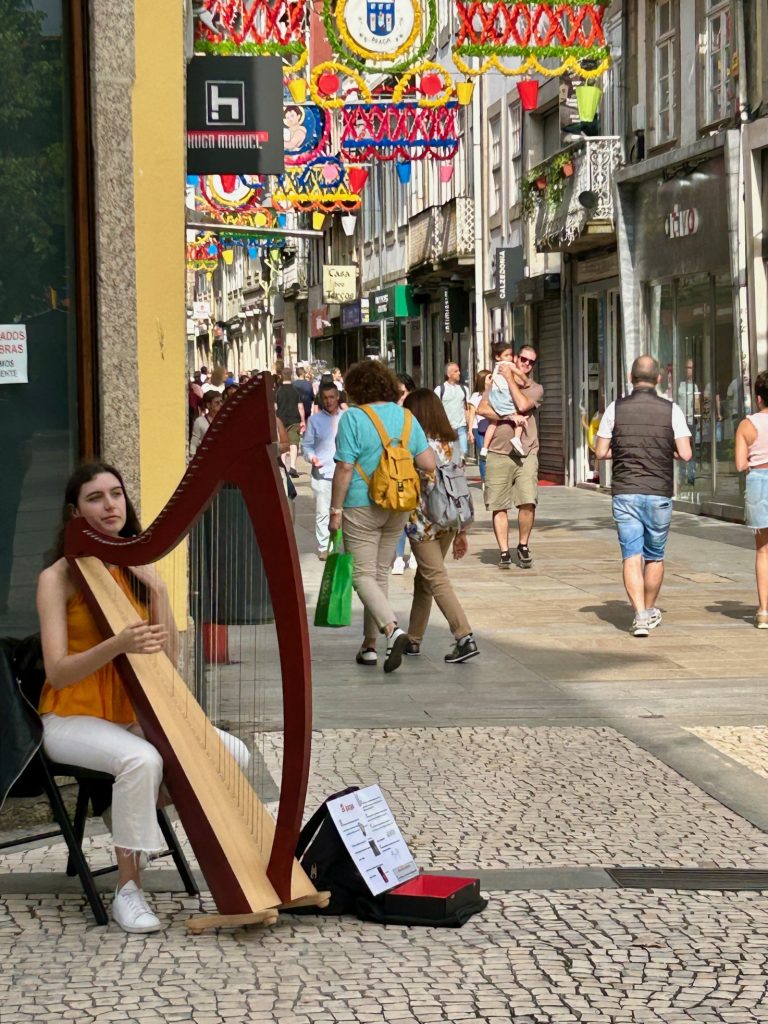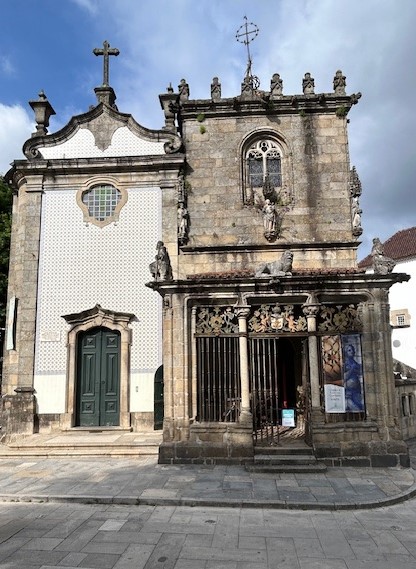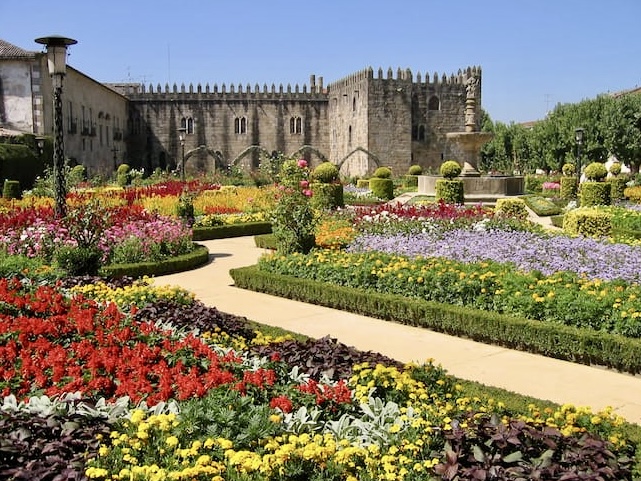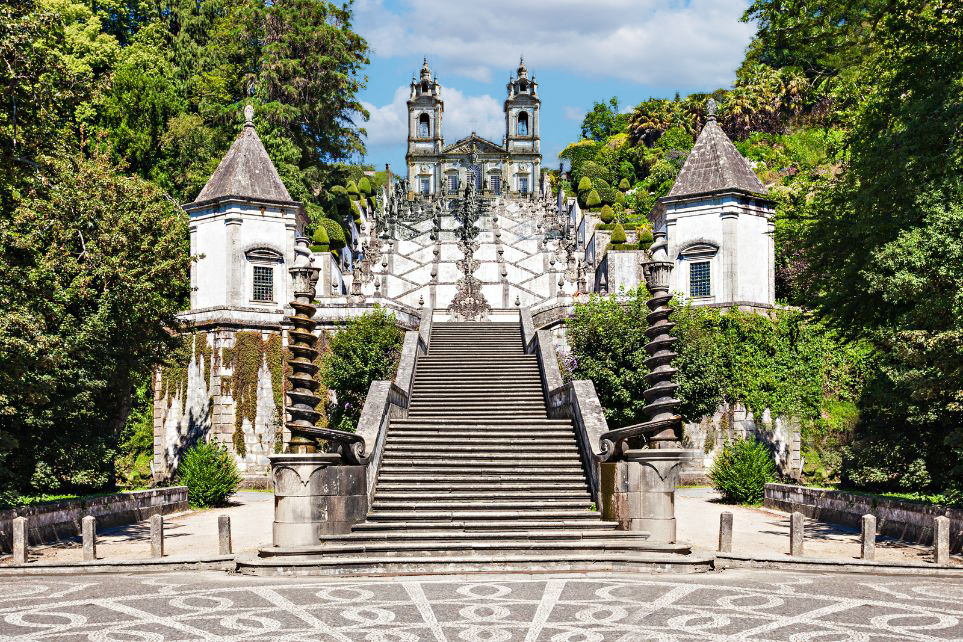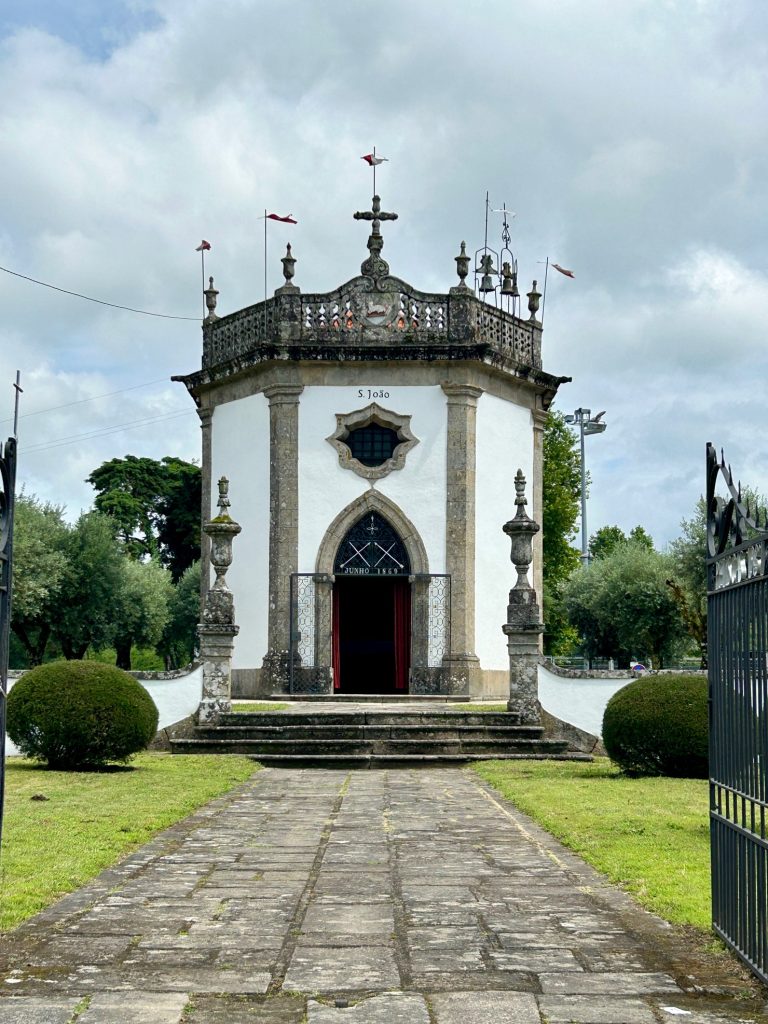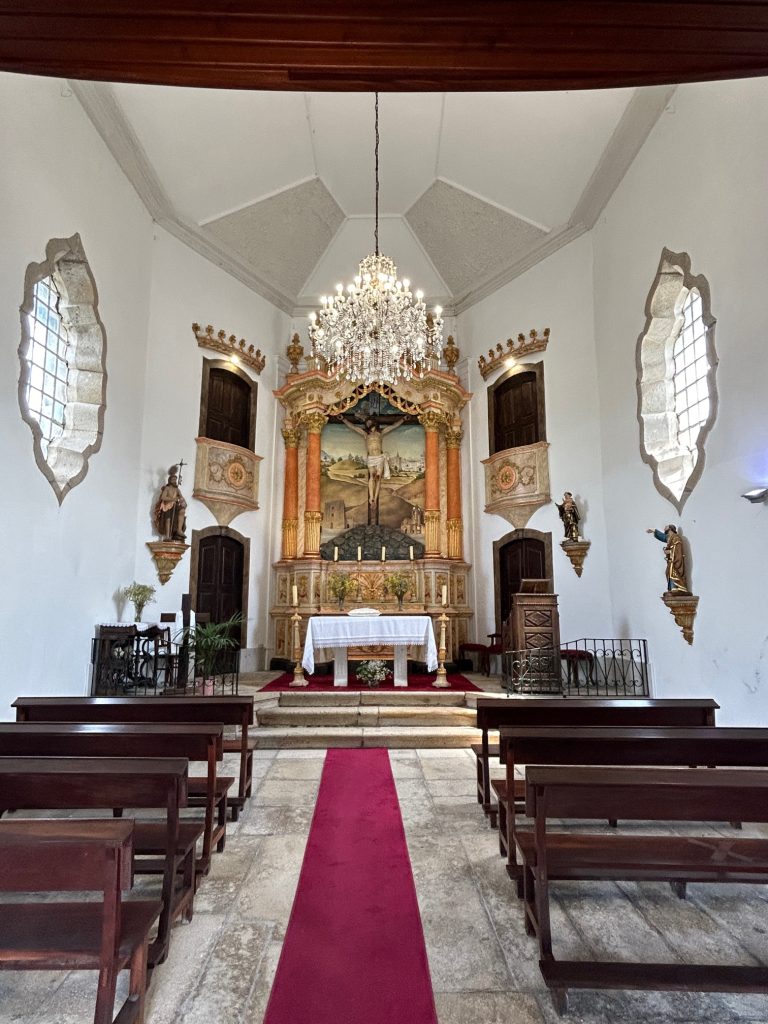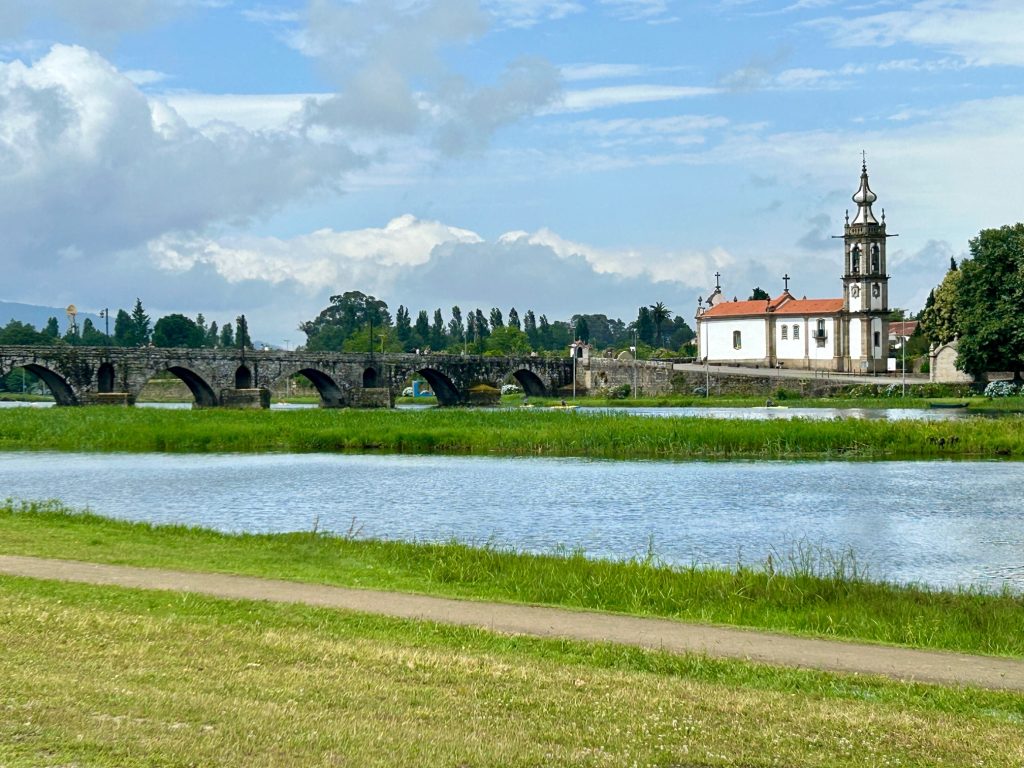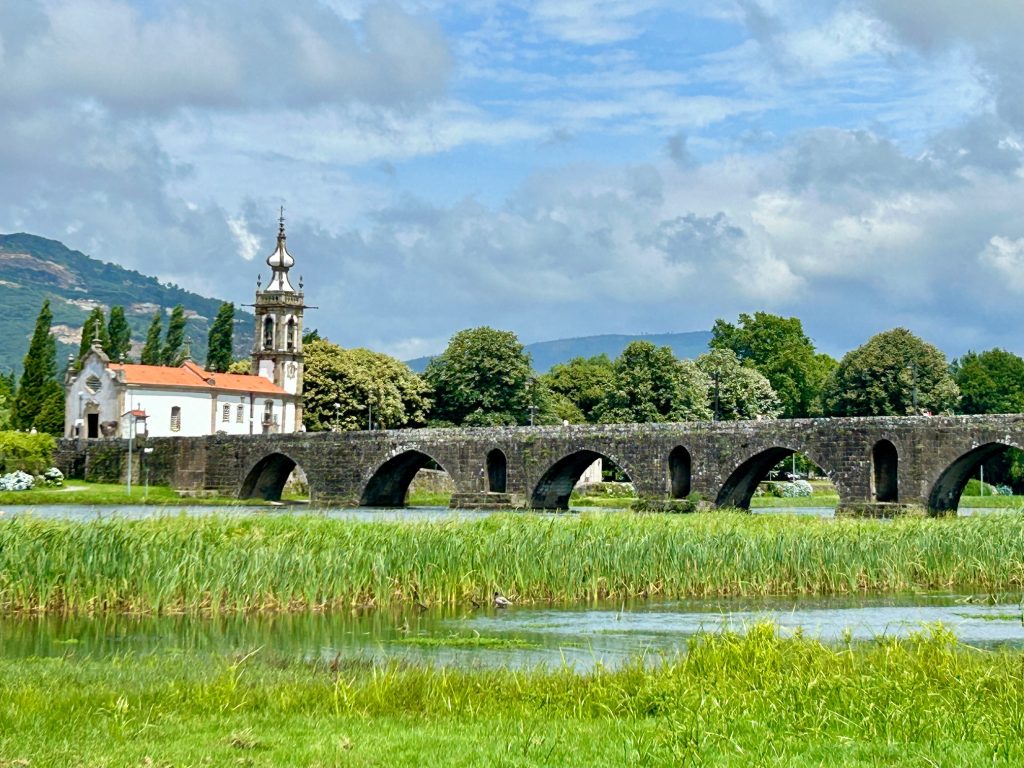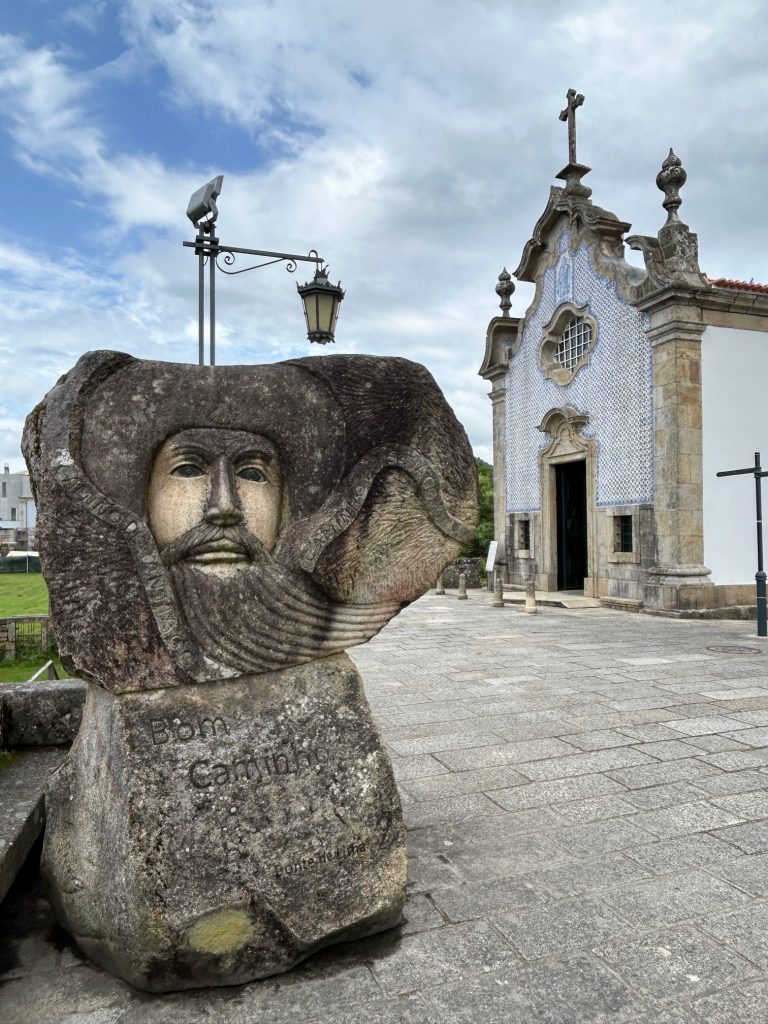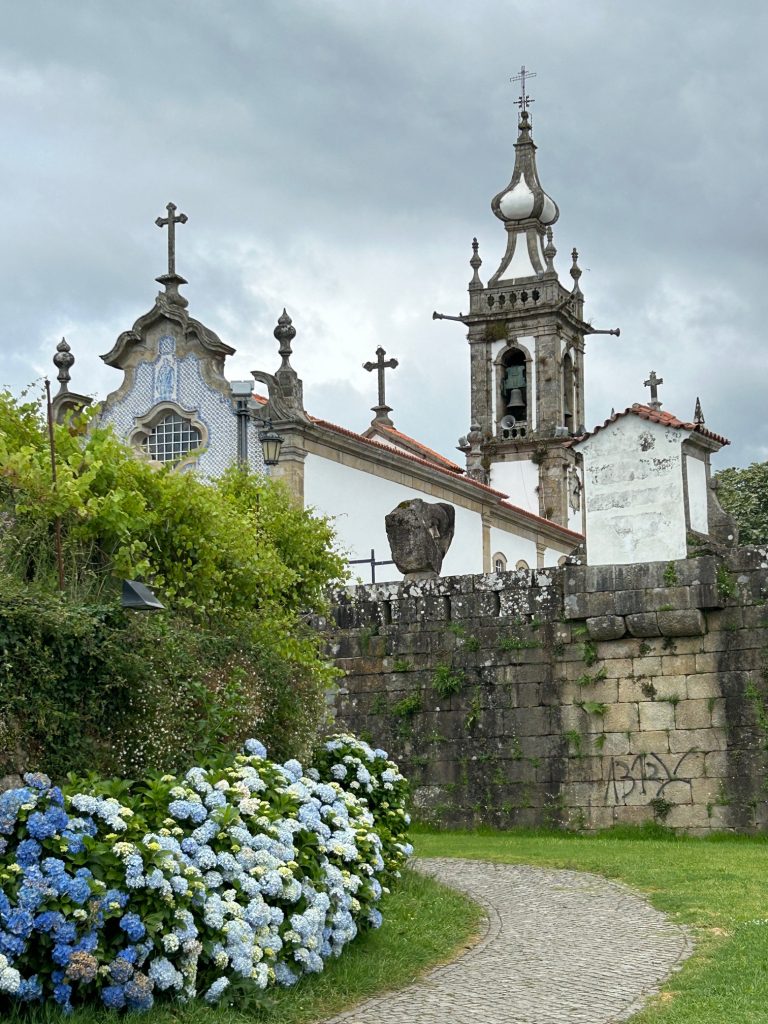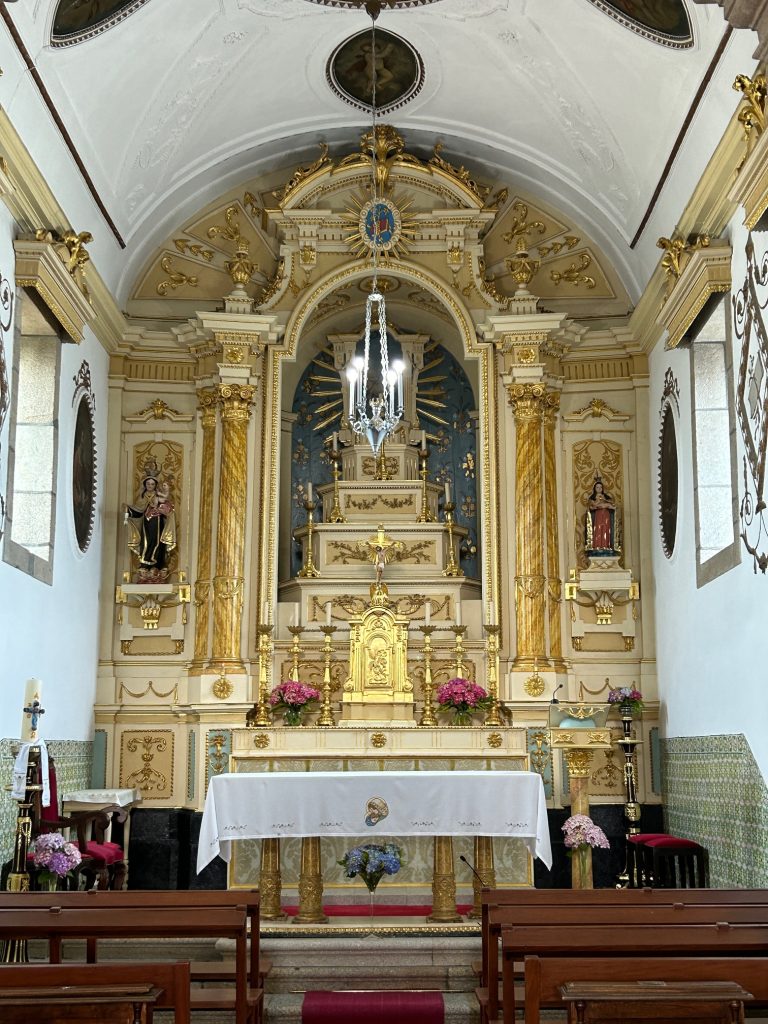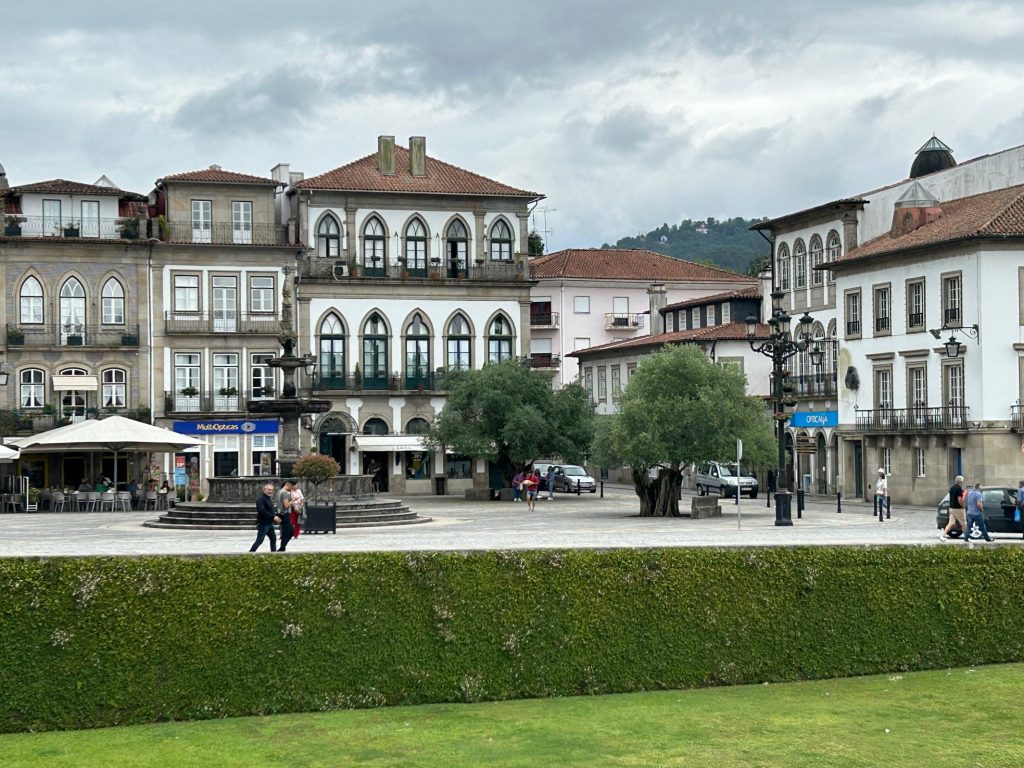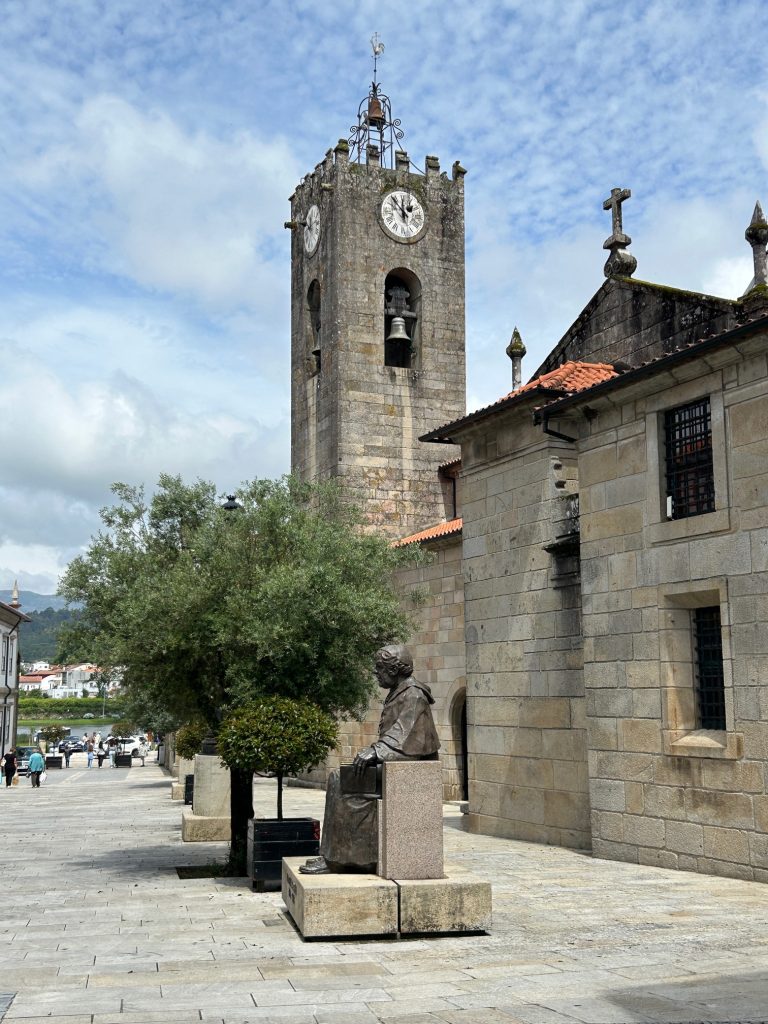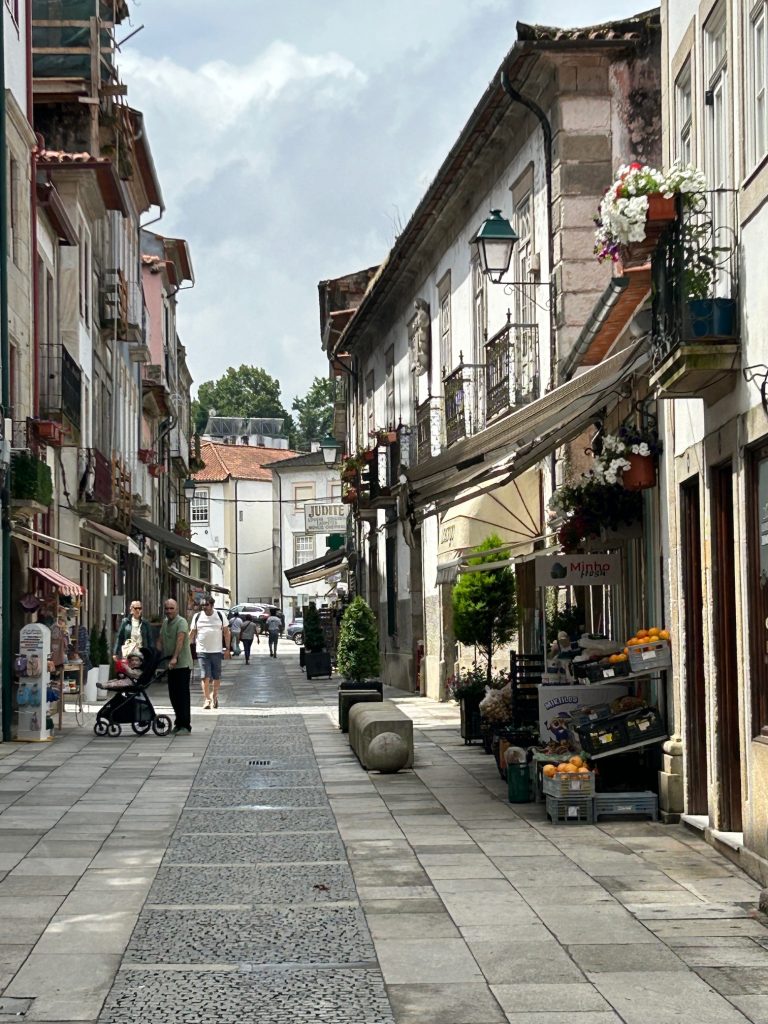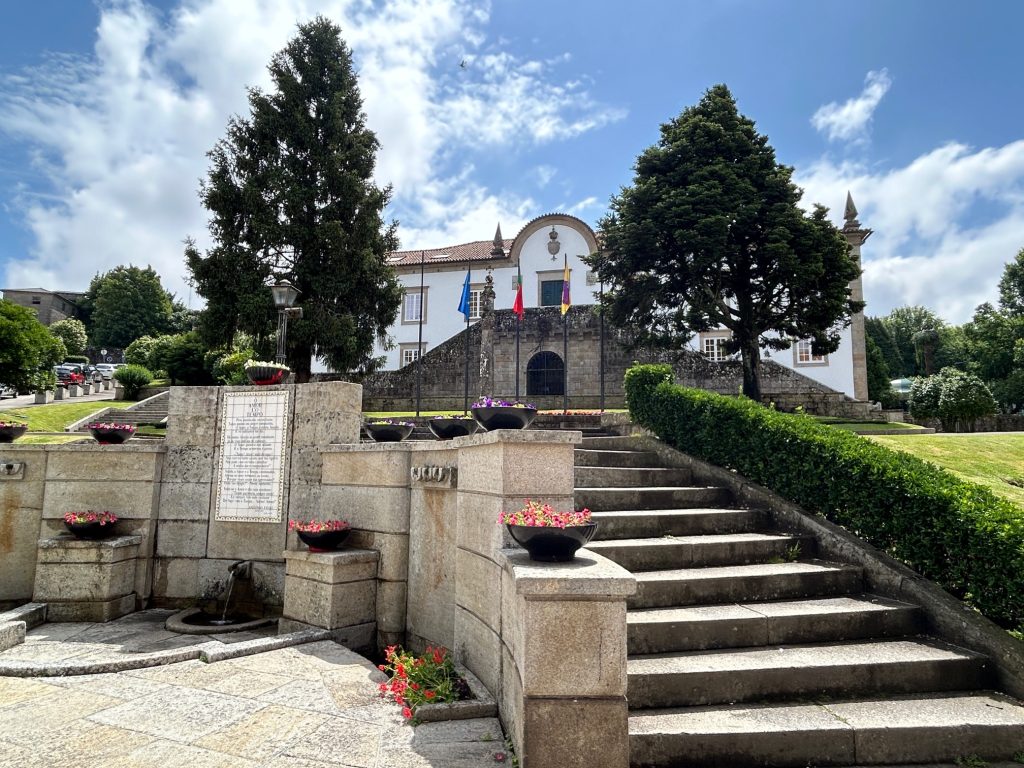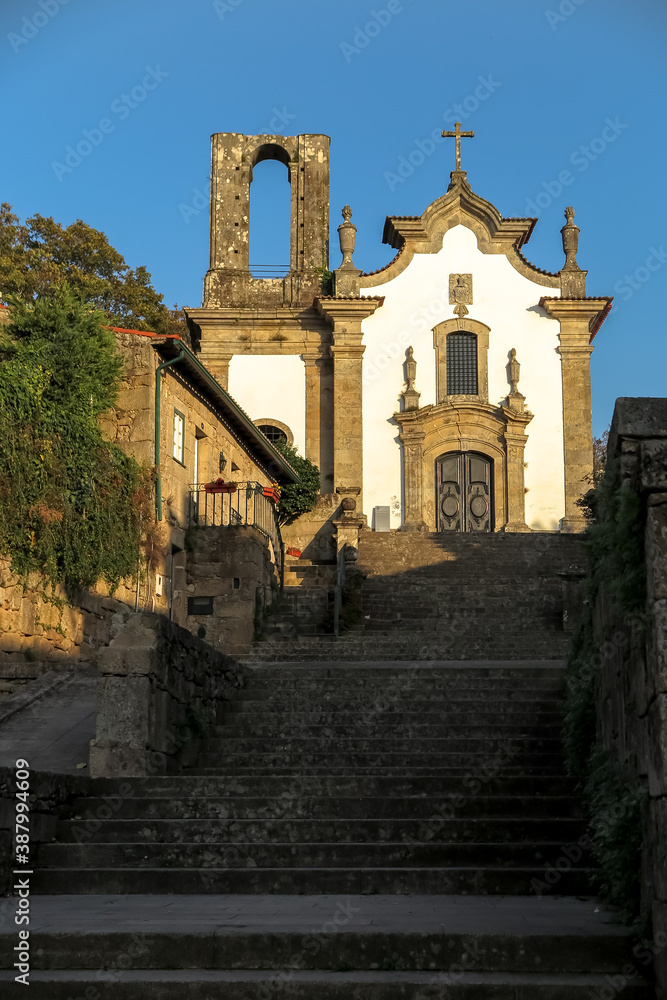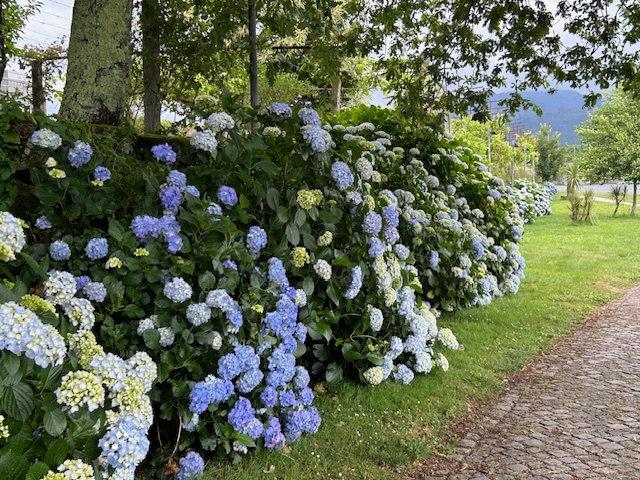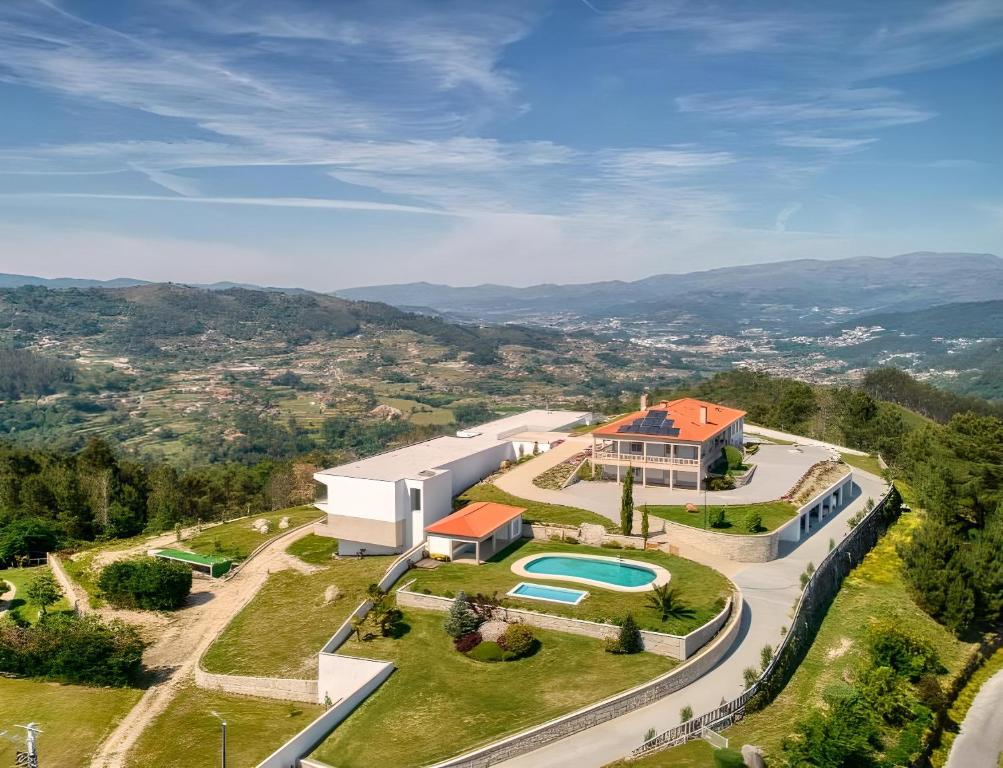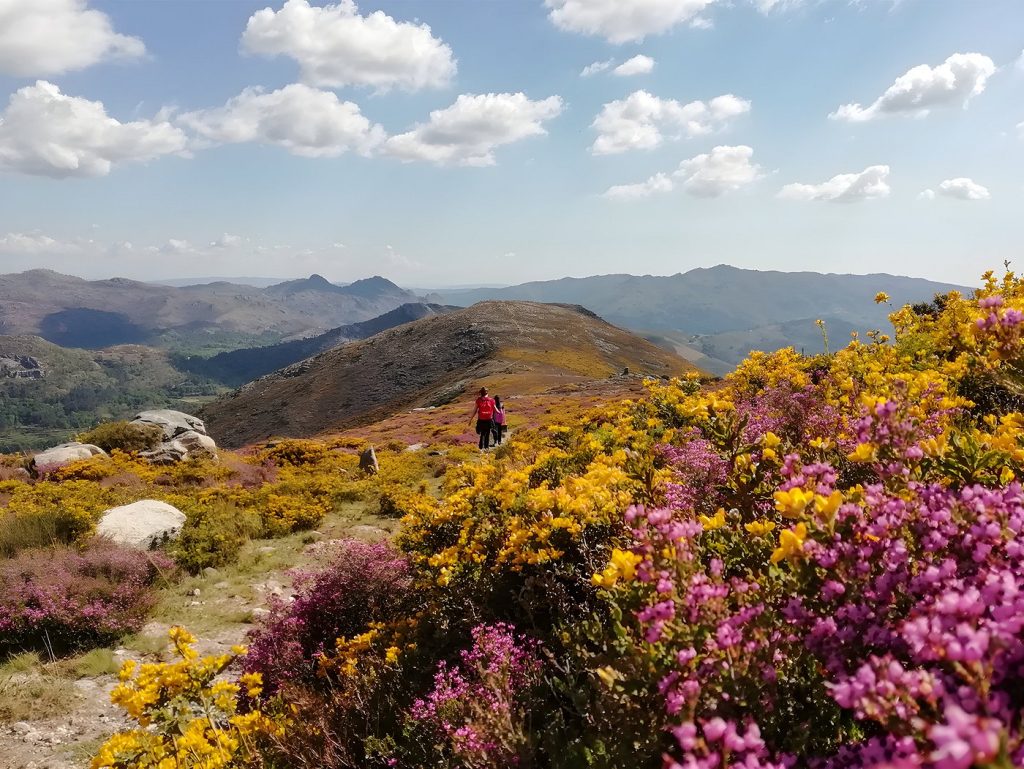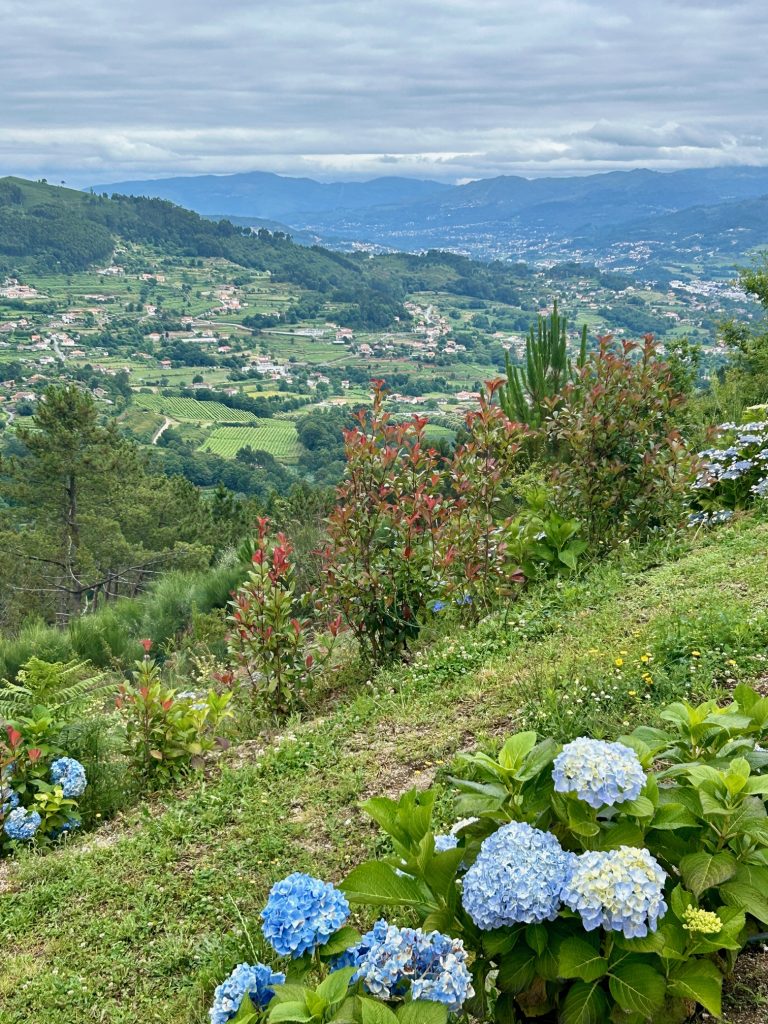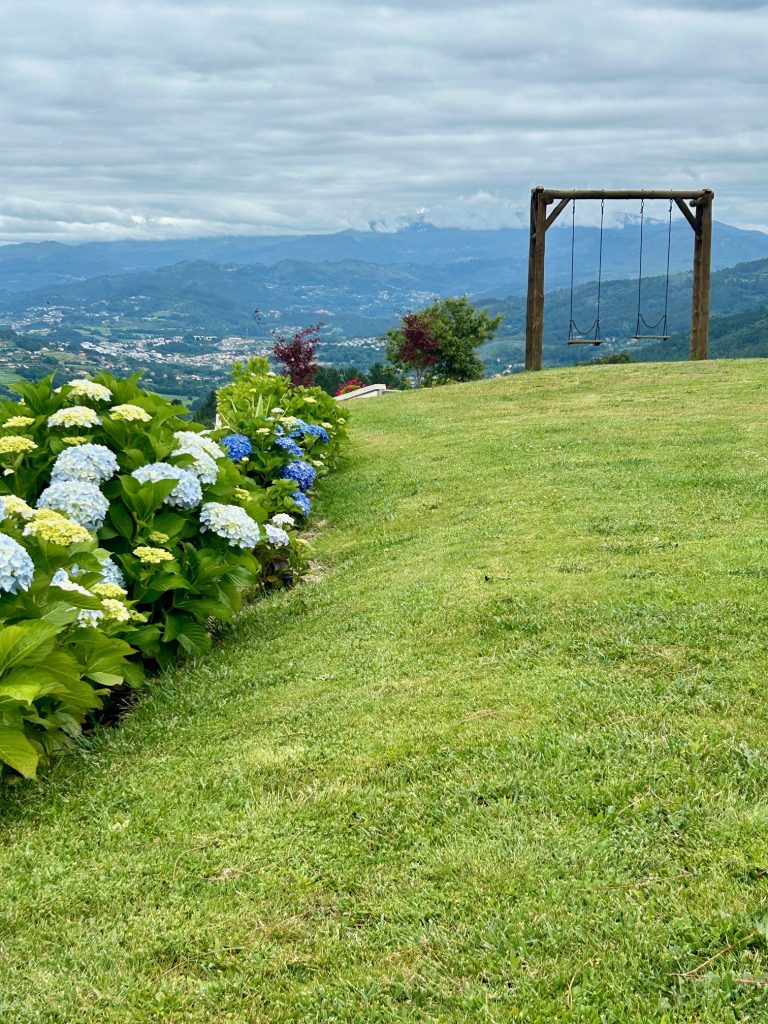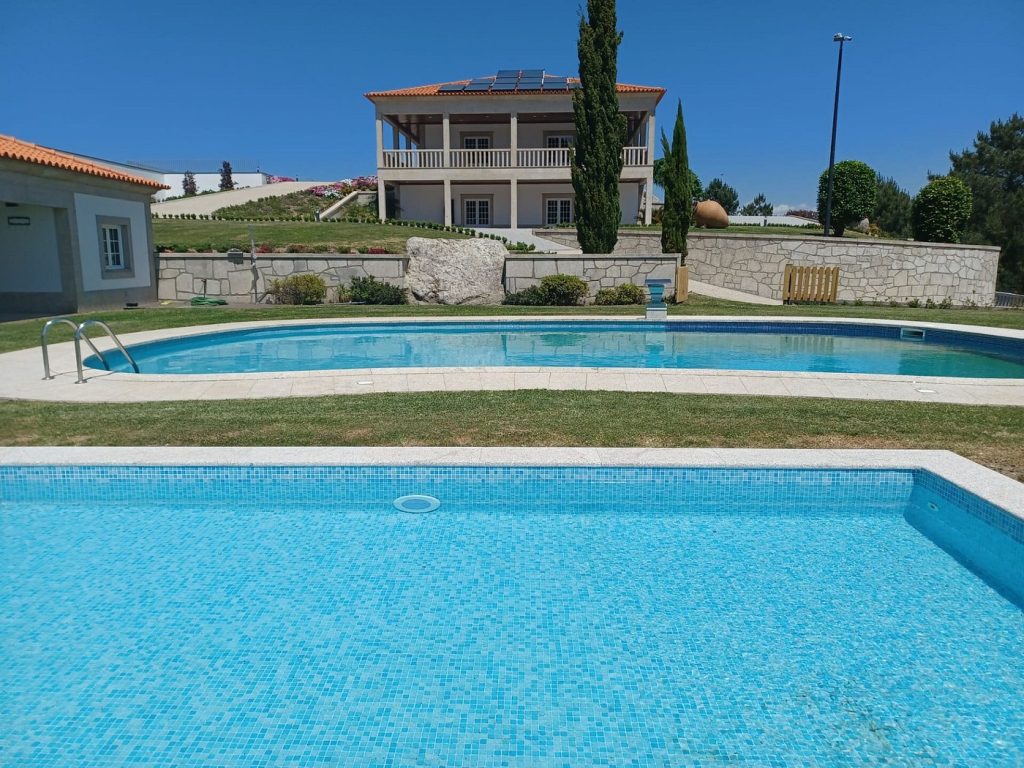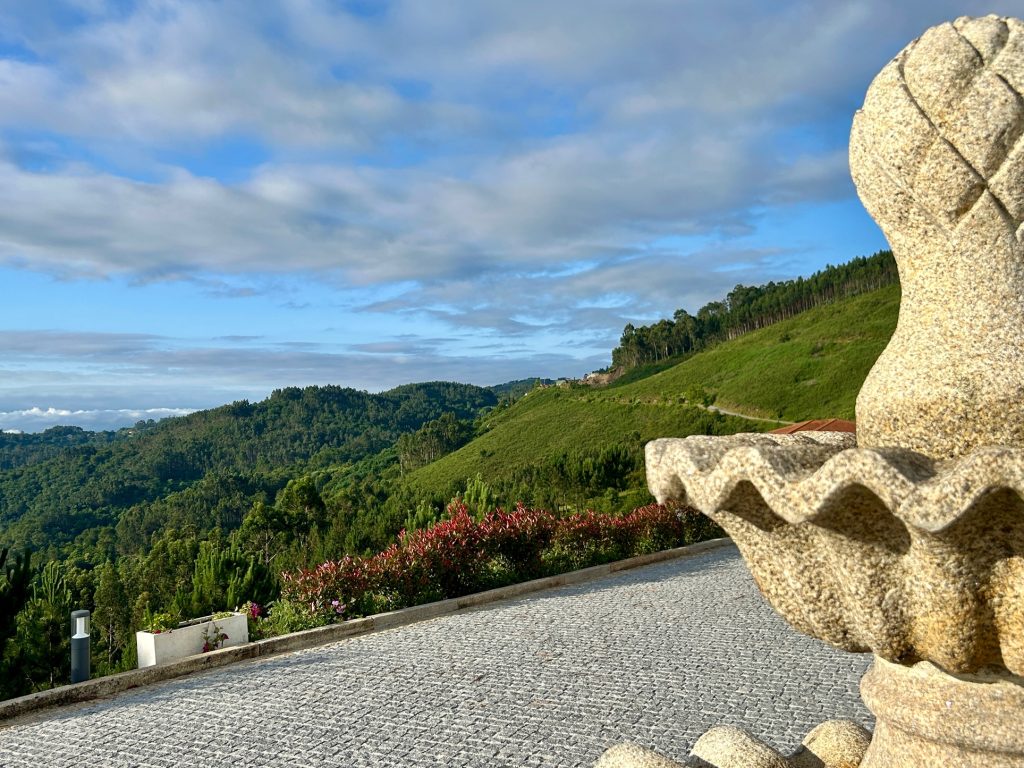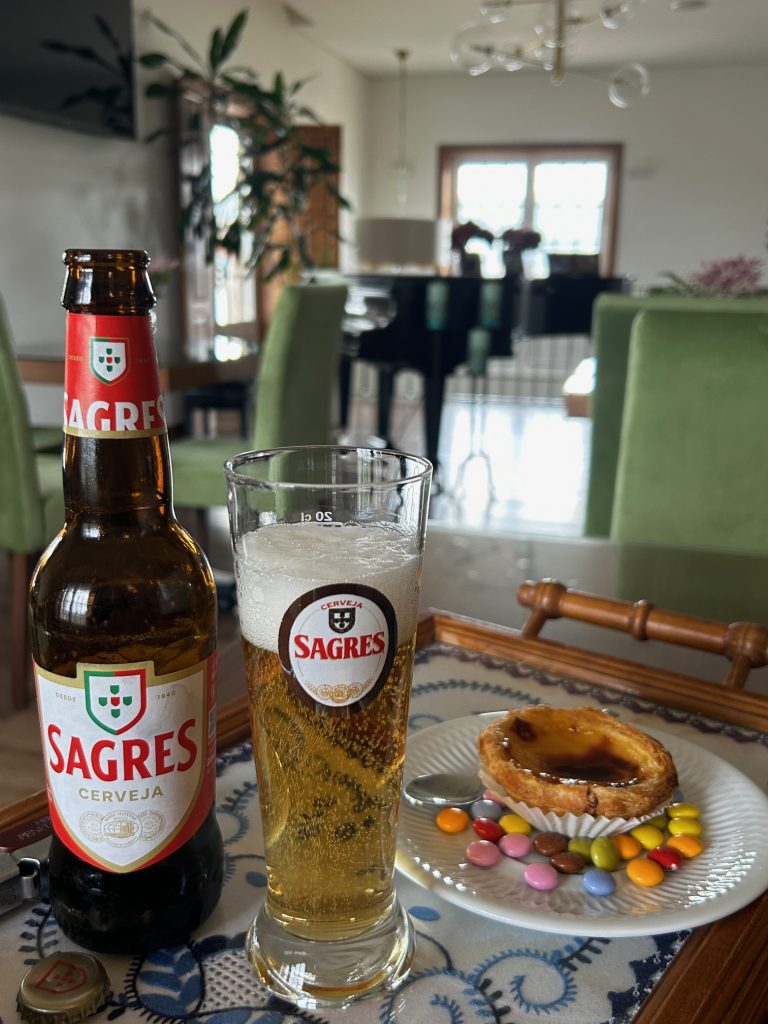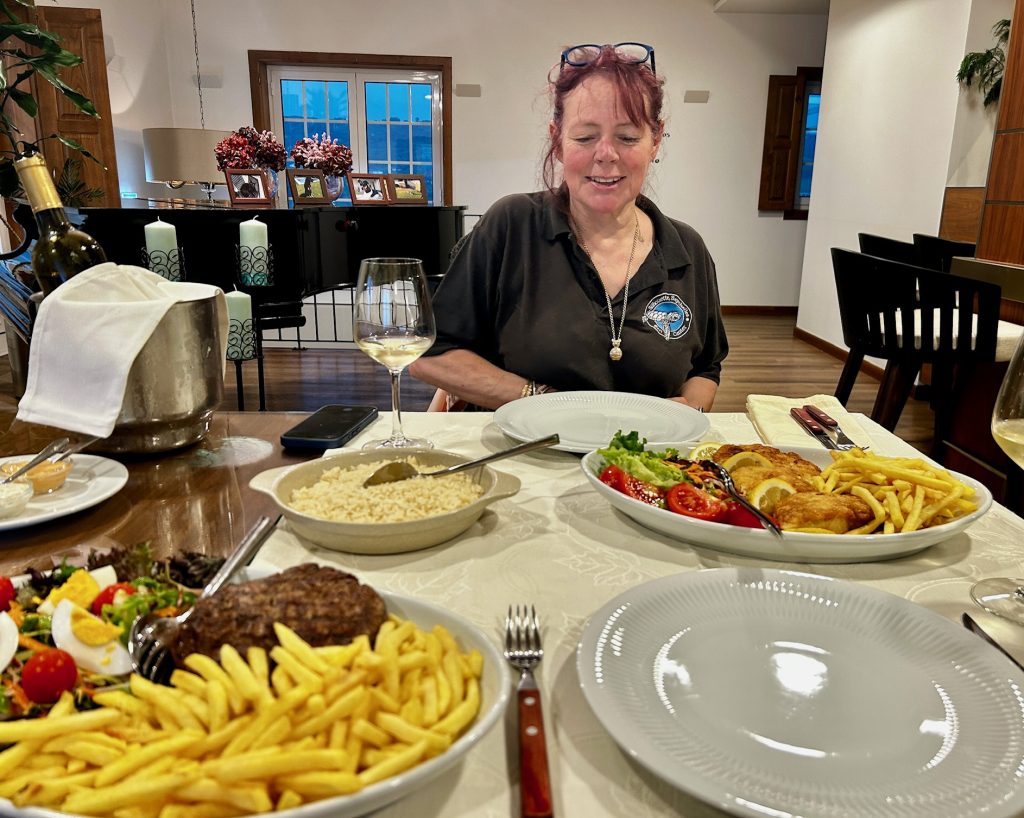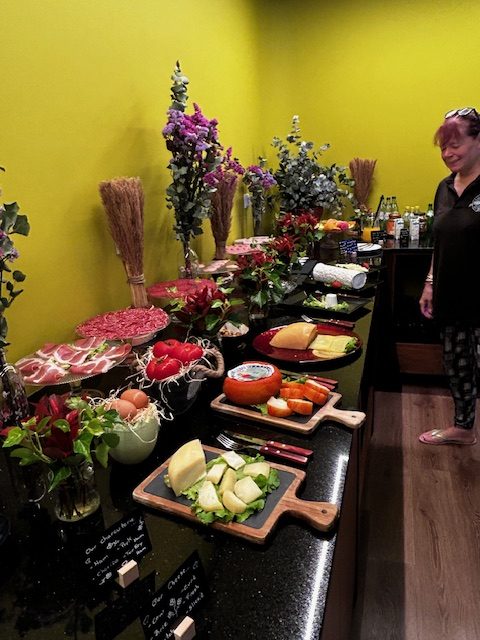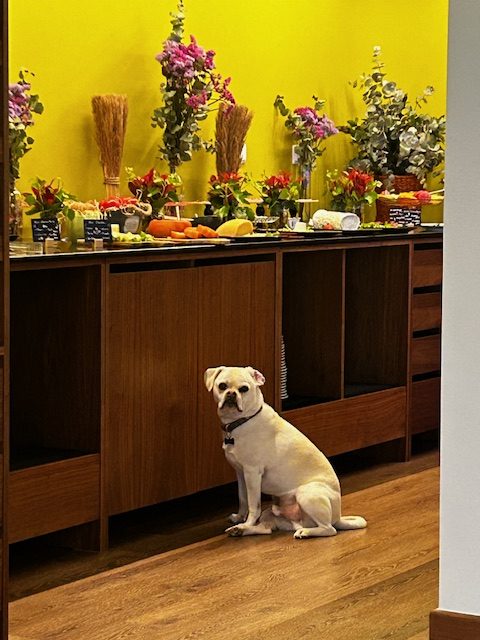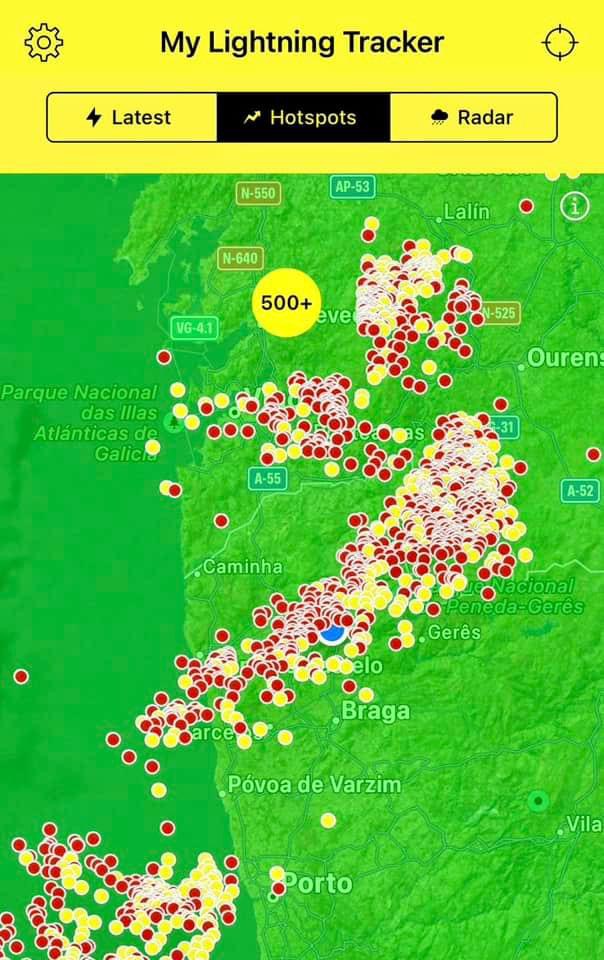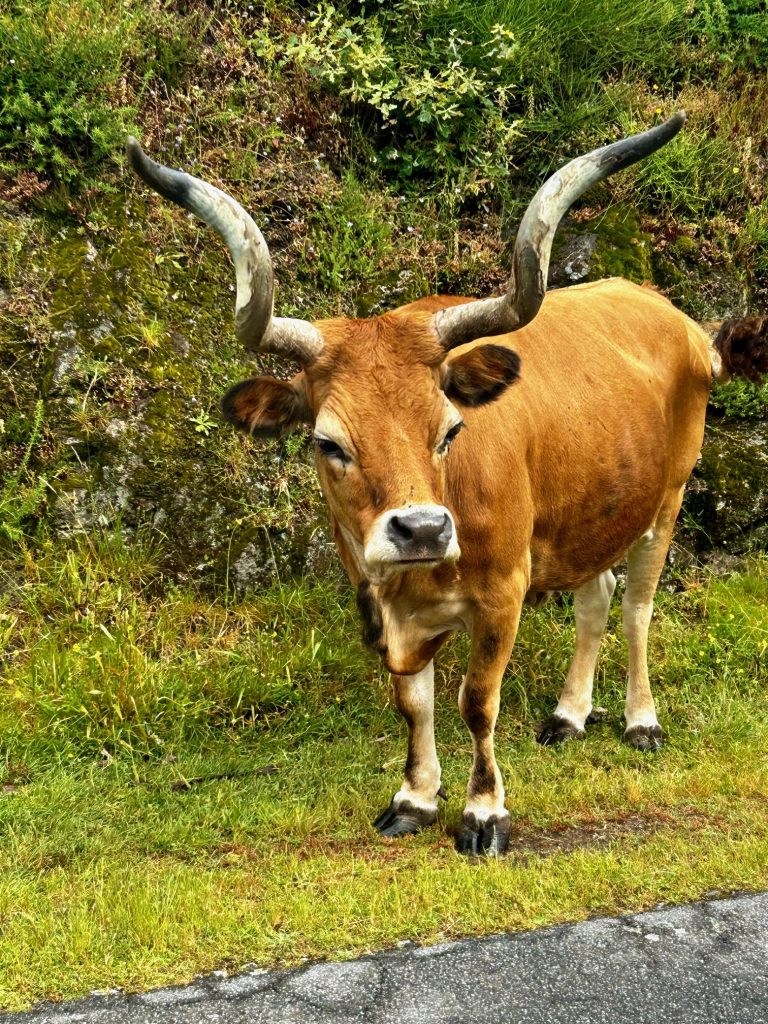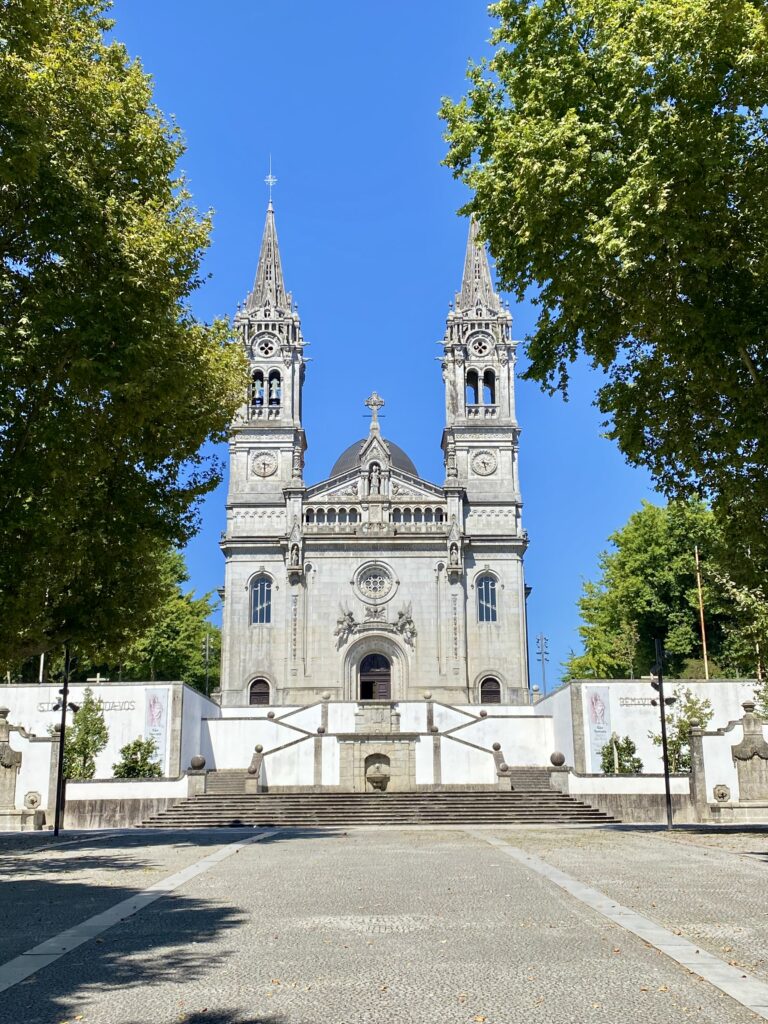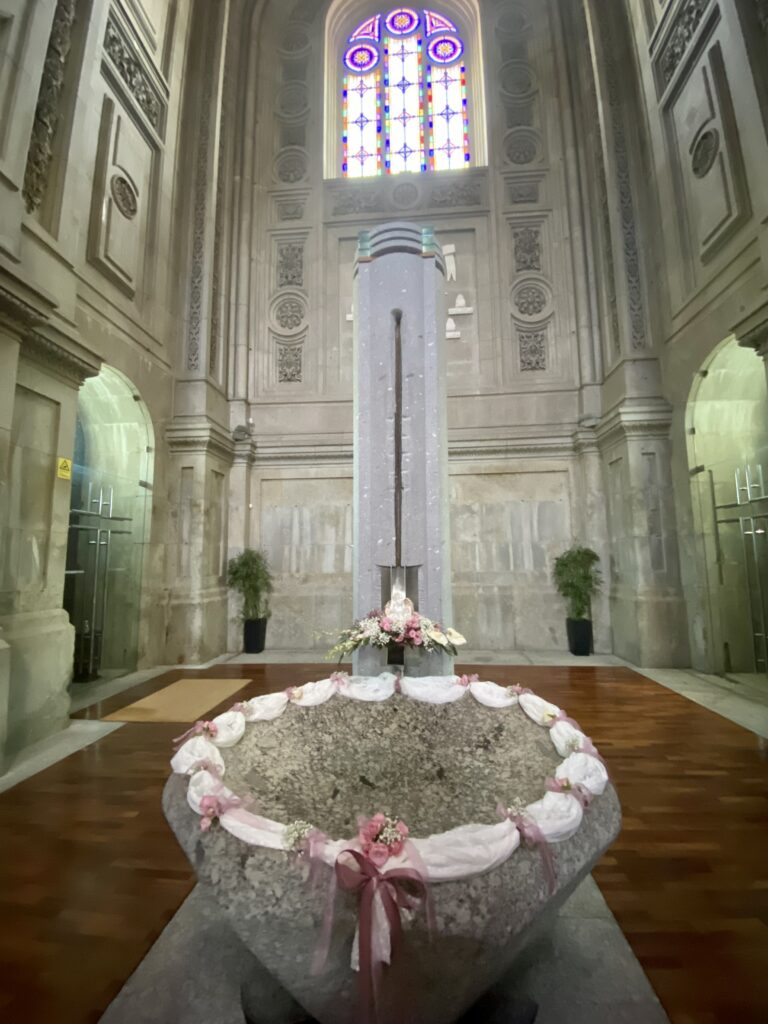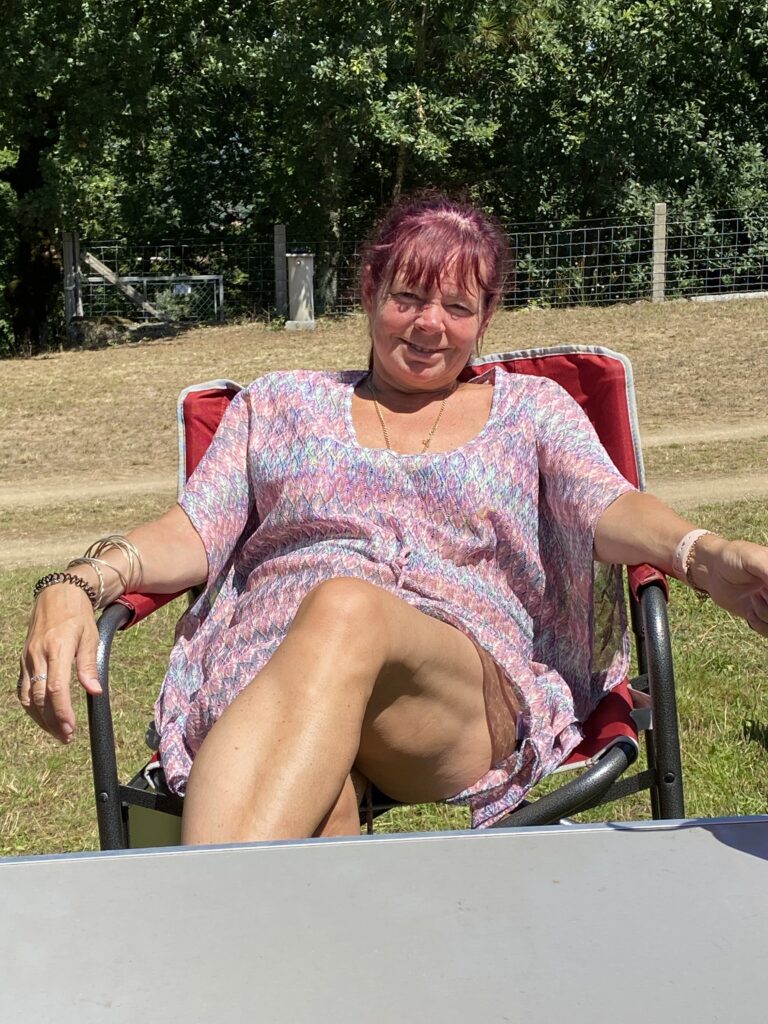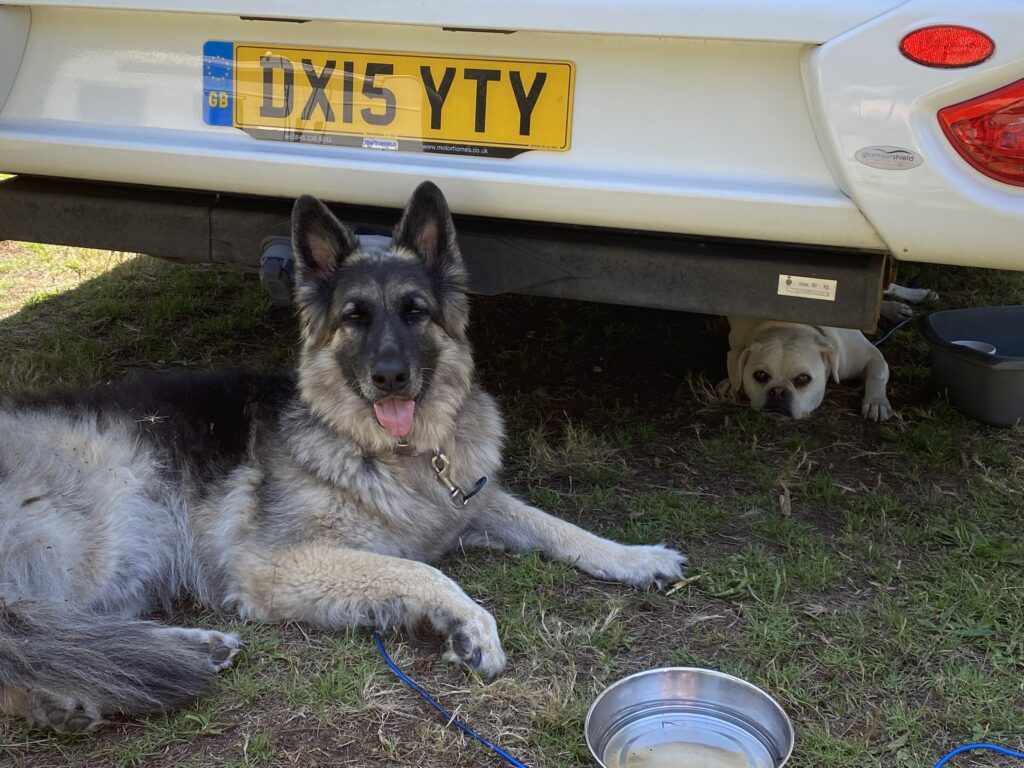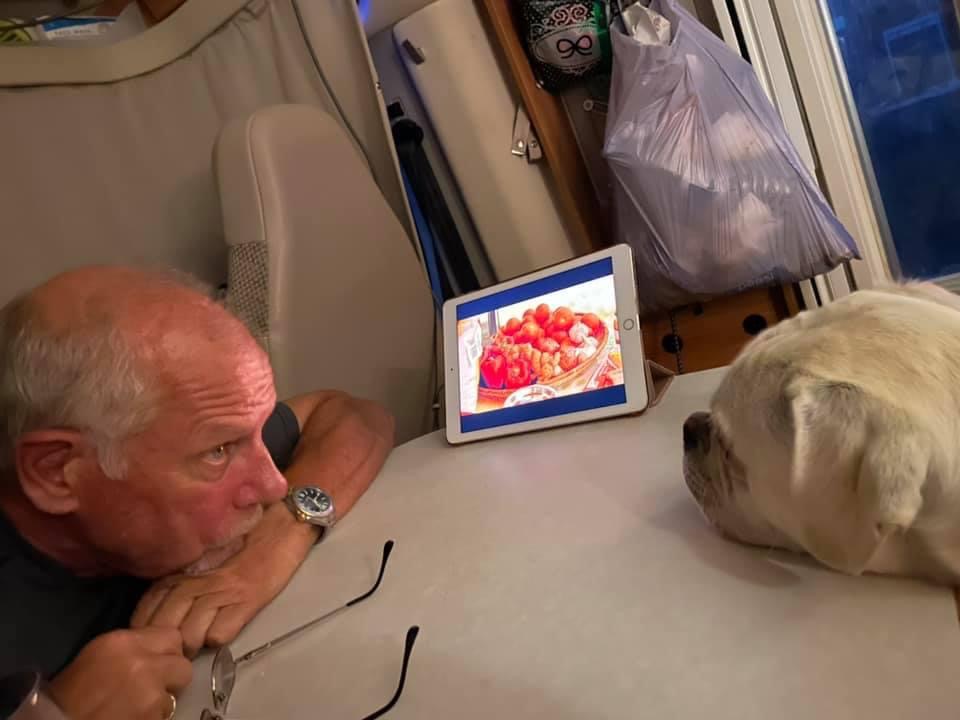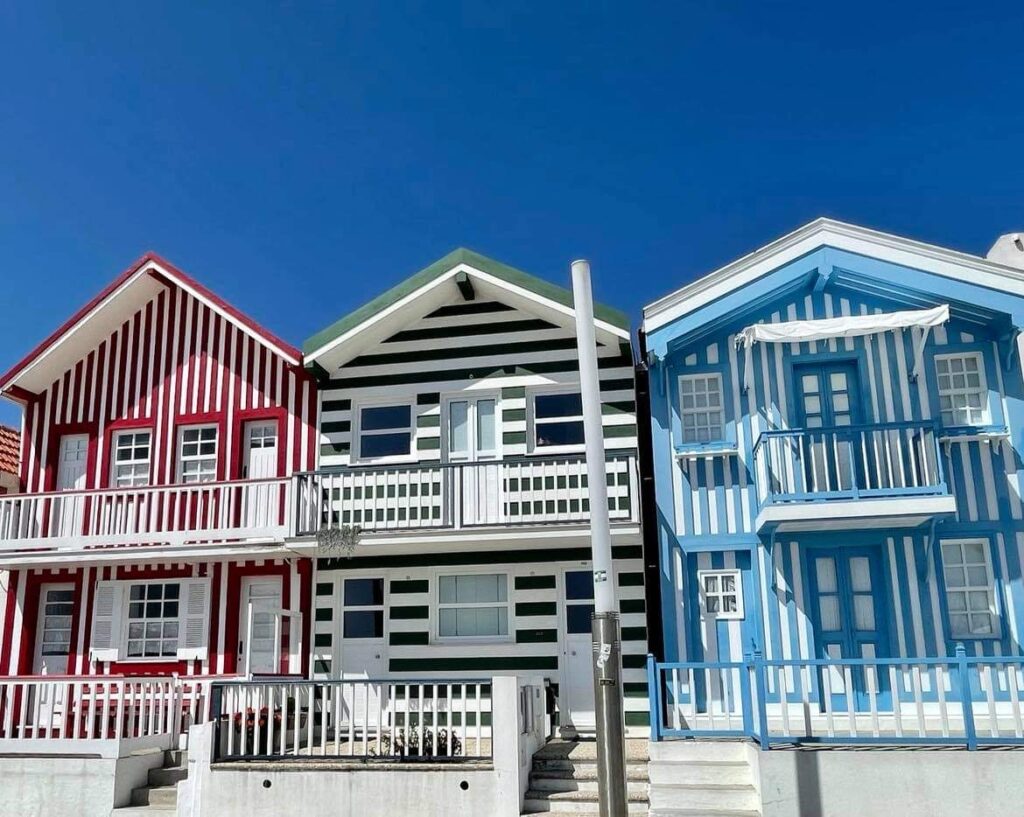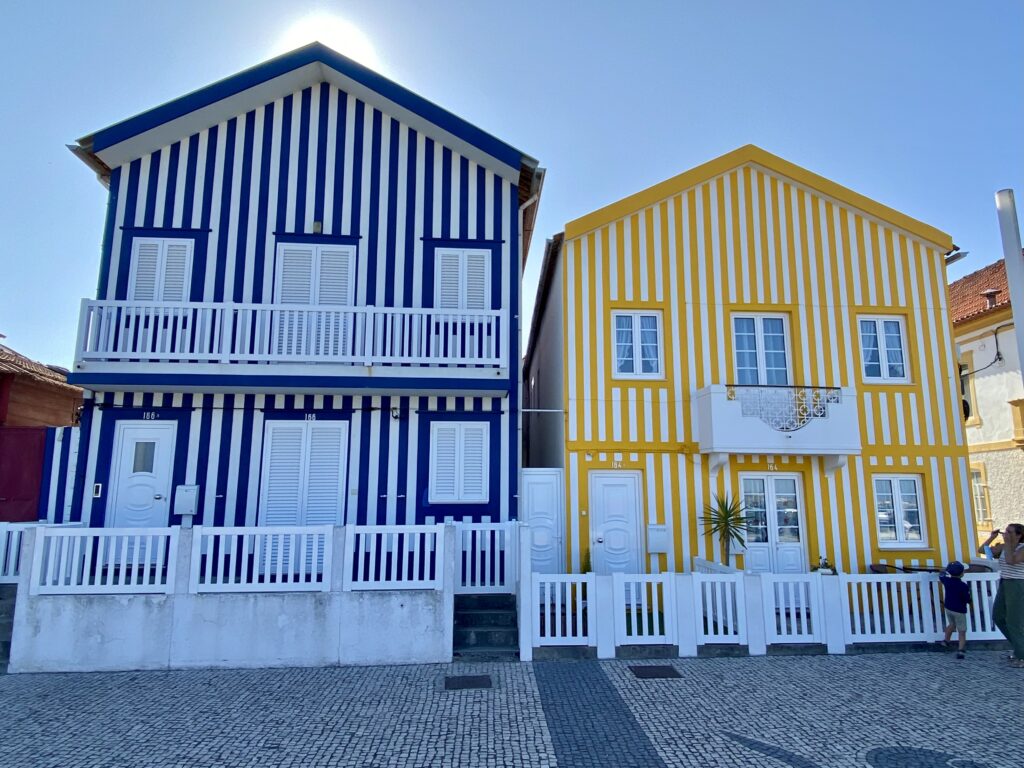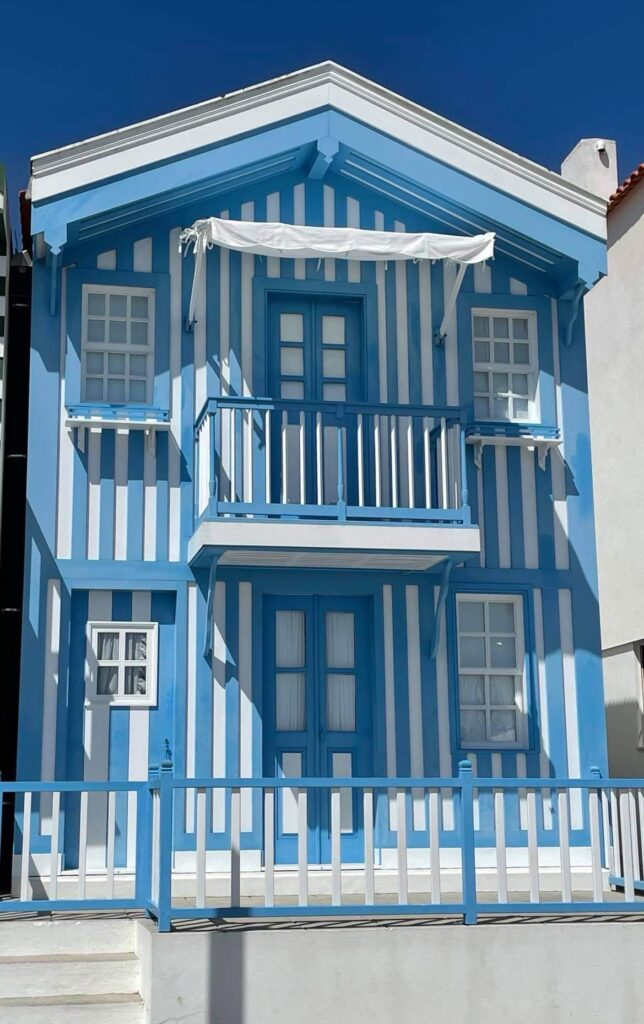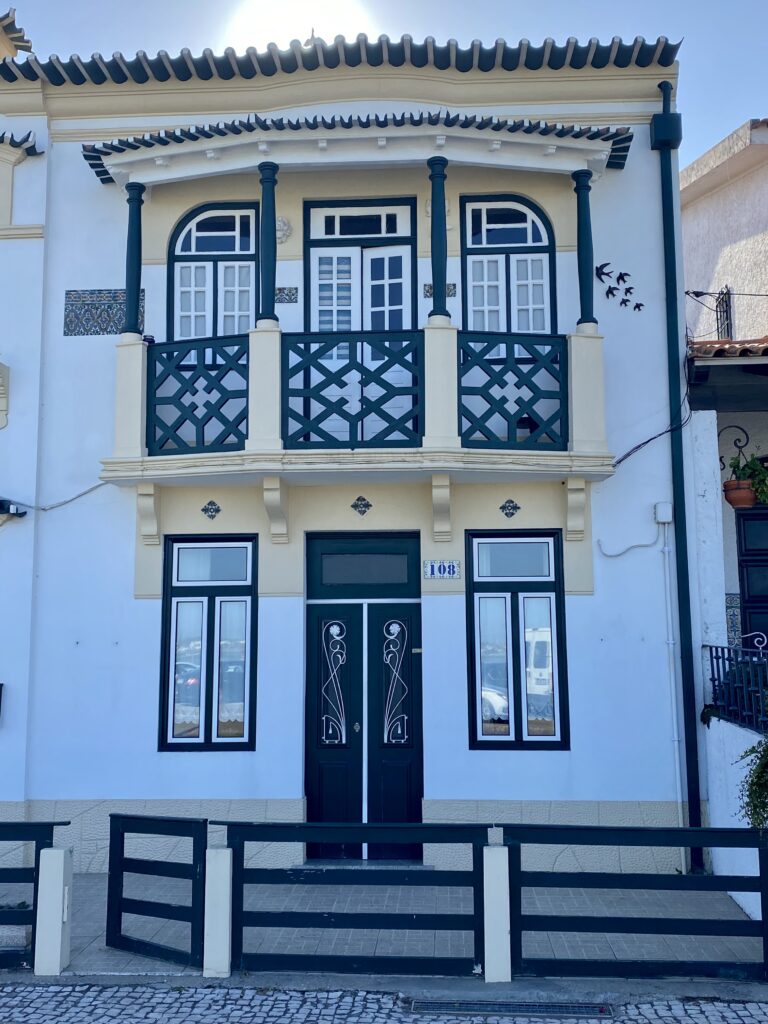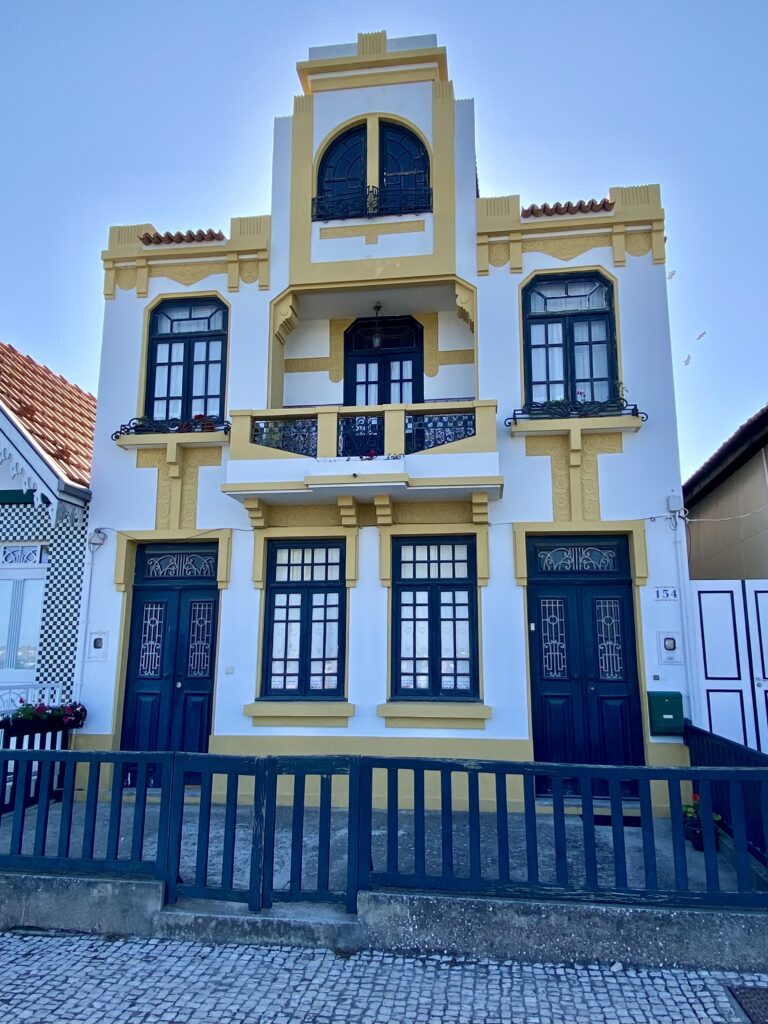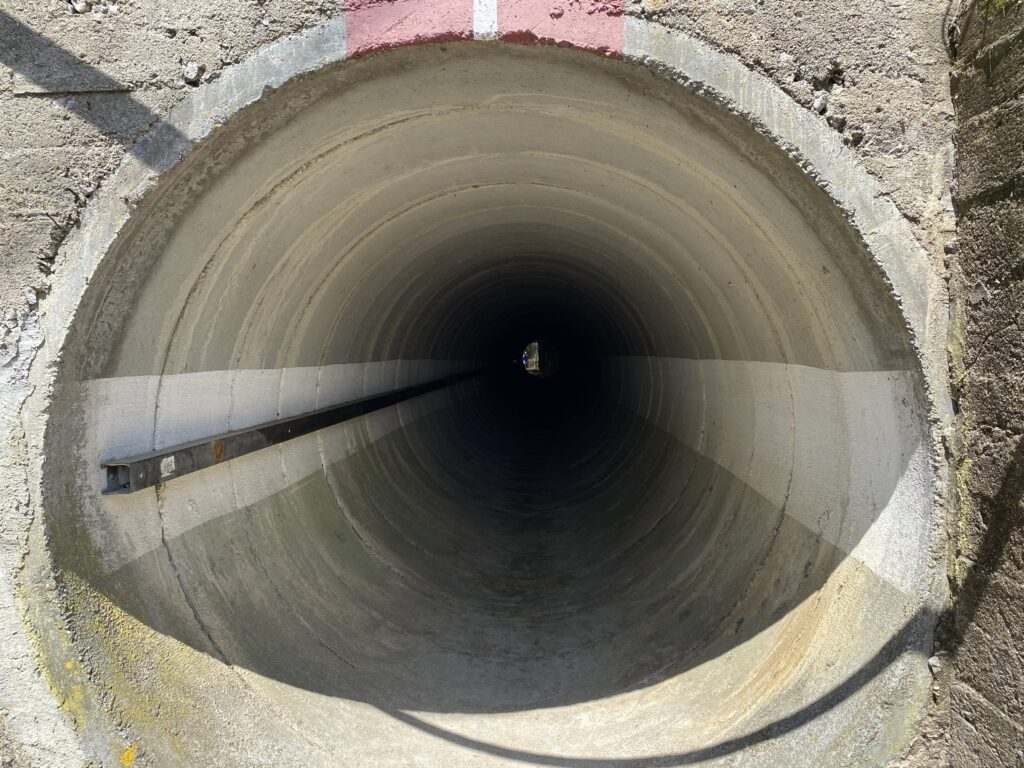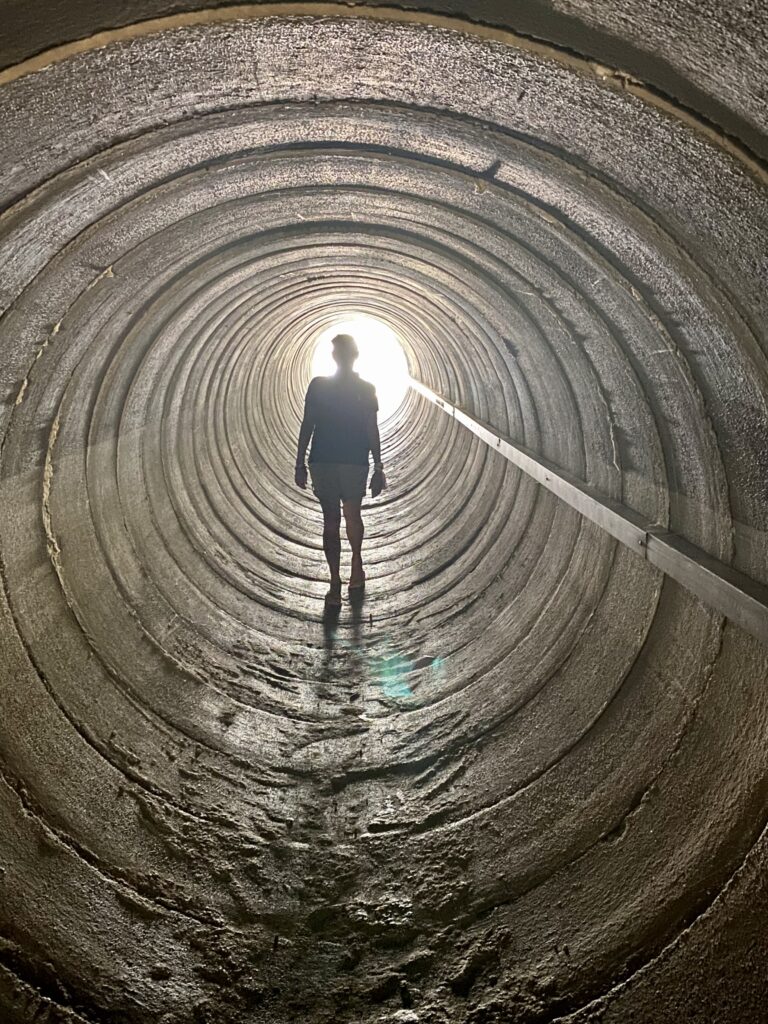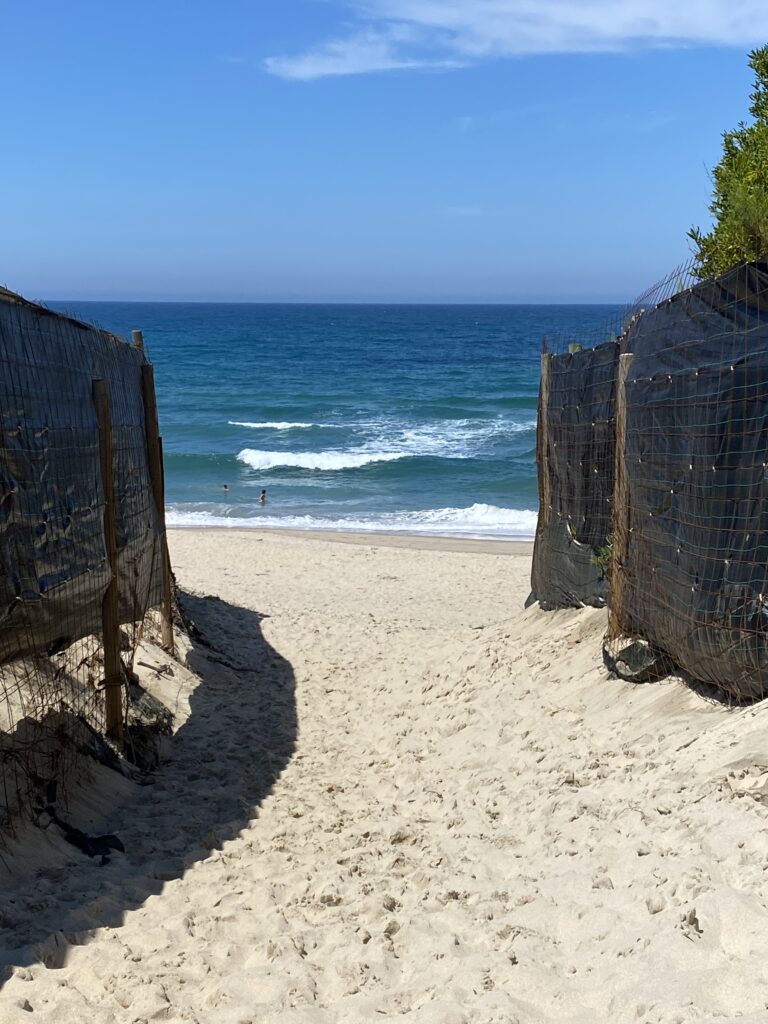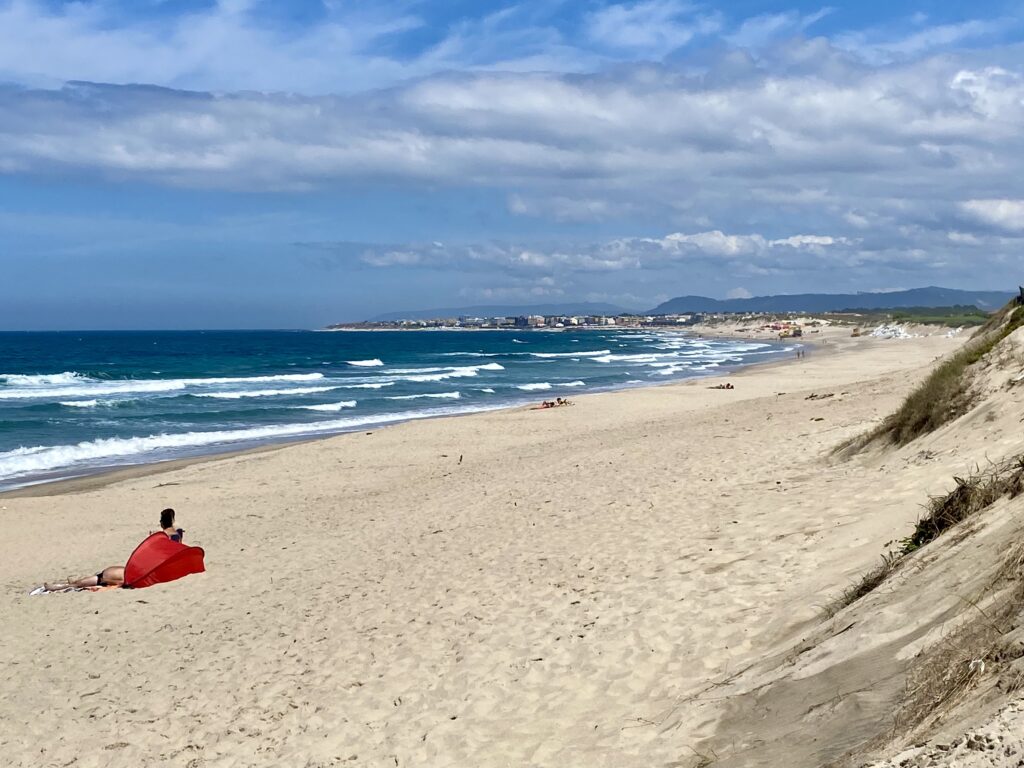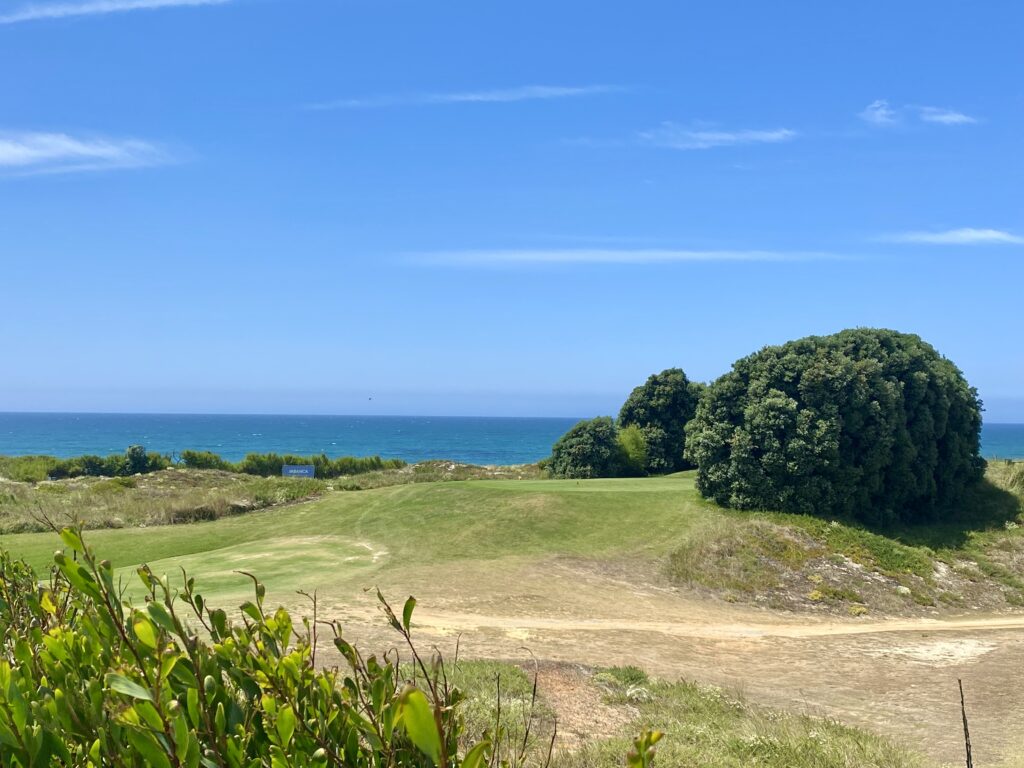En route back into Spain (we were now heading for Galicia) we paused at the small coastal town of Caminha in the very north west of Portugal.
Caminha is an old fishing town of some 16,000 people on the Minho Estuary (which separates Portugal from Spain) and it is directly opposite our next destination of A Guarda in Galicia. It’s on the Coastal Caminho route to Santiago and, while being visited by an increasing number of ‘pilgrims’, it remains a fairly quiet little town outside of the holiday months of July and August.
It has the most northerly beach in Portugal, the Foz de Minho, which wraps around the left bank of the estuary and leads south to the Camarido Beach; so allowing visitors the option to swim in the River Minho or in the Atlantic Ocean. The best beach in this area, especially for surfers, is the Moledo Beach which is just a bit further south of the Camarido and a little to the north of the resort town of Vila Praia de Ancora. One other beach in the area worth visiting (and which is protected from the often strong winds blowing in from the Atlantic) is the Azenhas River Beach in the town of Vilar de Mouros on the banks of the River Coura. This latter beach also offers great photo opportunities with it’s watermills.

We will visit Vilar de Mouros some time in the future, ideally at the time of it’s annual music festival which in the past has hosted acts as diverse as Bob Dylan, Cure and U2 but, I was talking about Caminha…
We parked up on a large open car park by the harbour and entered the old town via the Praca da Conseilheiro Silva Tores. This plaza, more of a circle than a square, is the prettiest part of the town. It is dominated by a clock tower (the last of thirteen towers which used to connect the now mostly dismantled town walls) but, it also contains various other interesting features including (a) a very attractive town hall building; (b) a beautiful 16th century church, the Igreja da Misericordia (which was built as a spiritual hostel and hospital for pilgrims on their way to Santiago) and; (c) an impressive 16th century ornamental fountain designed by Joao Lopes.

The Terreiro Fountain designed by Lopes is actually one of three identical fountains (the other two are to be found in nearby Viana do Castelo and in Pontevreda over the border in Galicia). The Caminha fountain was initially located in the Norte village of Moledo but was moved to Caminha early in the 19th century.
The little Igreja da Misericordia (Church of Mercy) is something else. Inside, it is stunning…

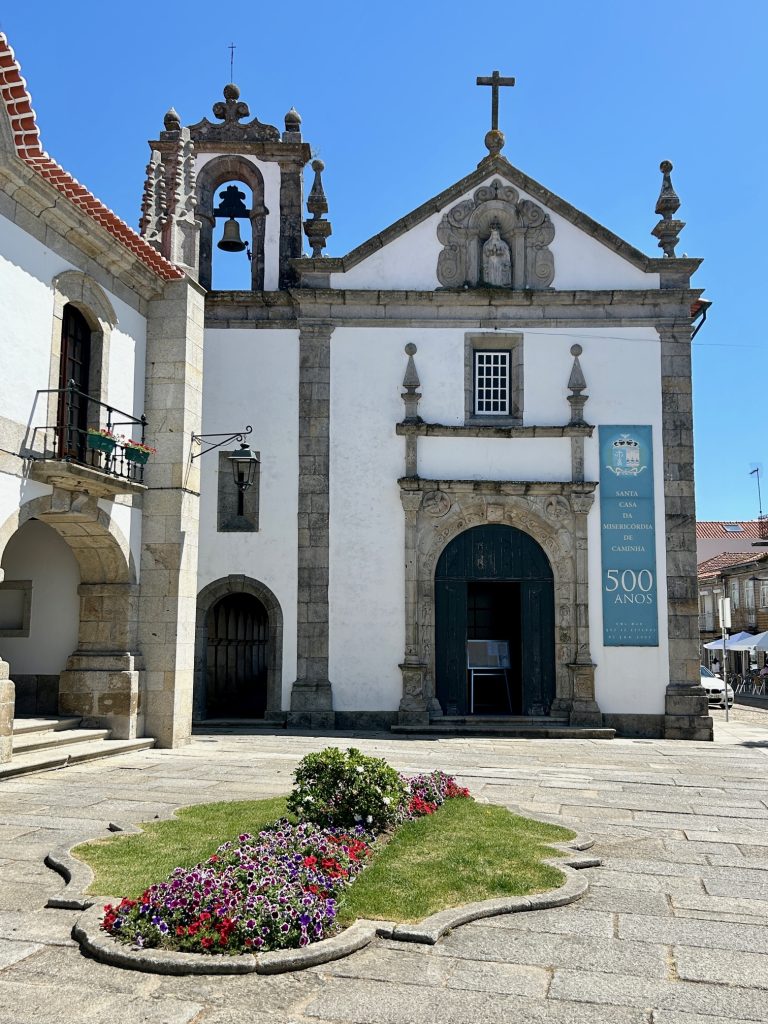
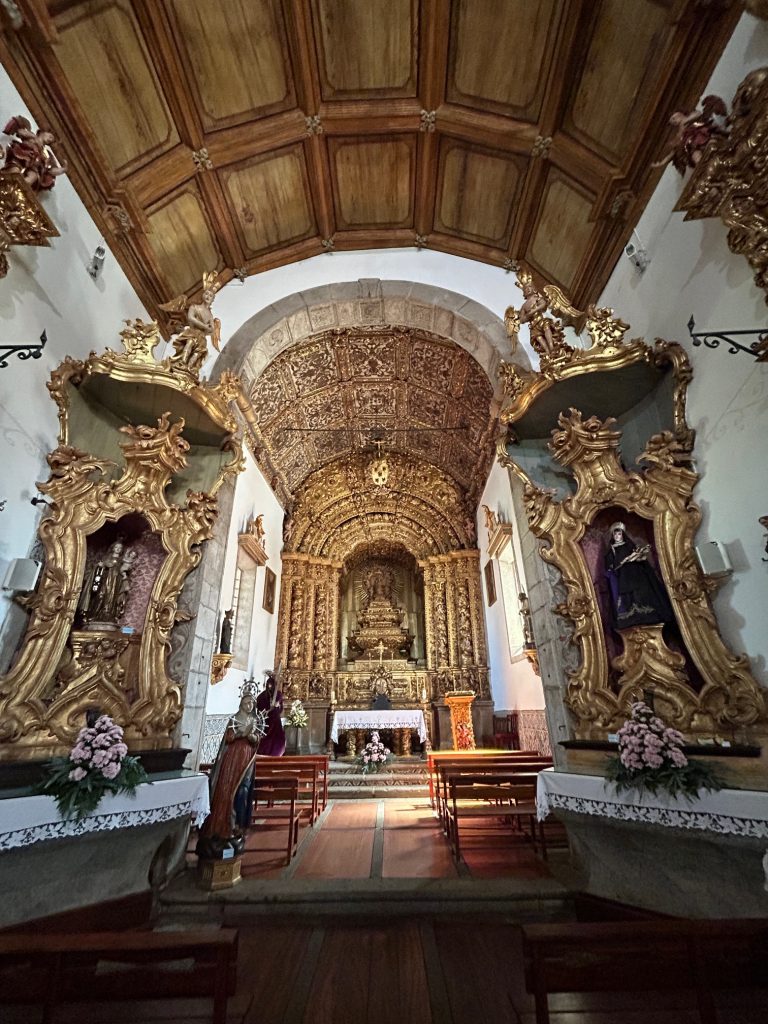
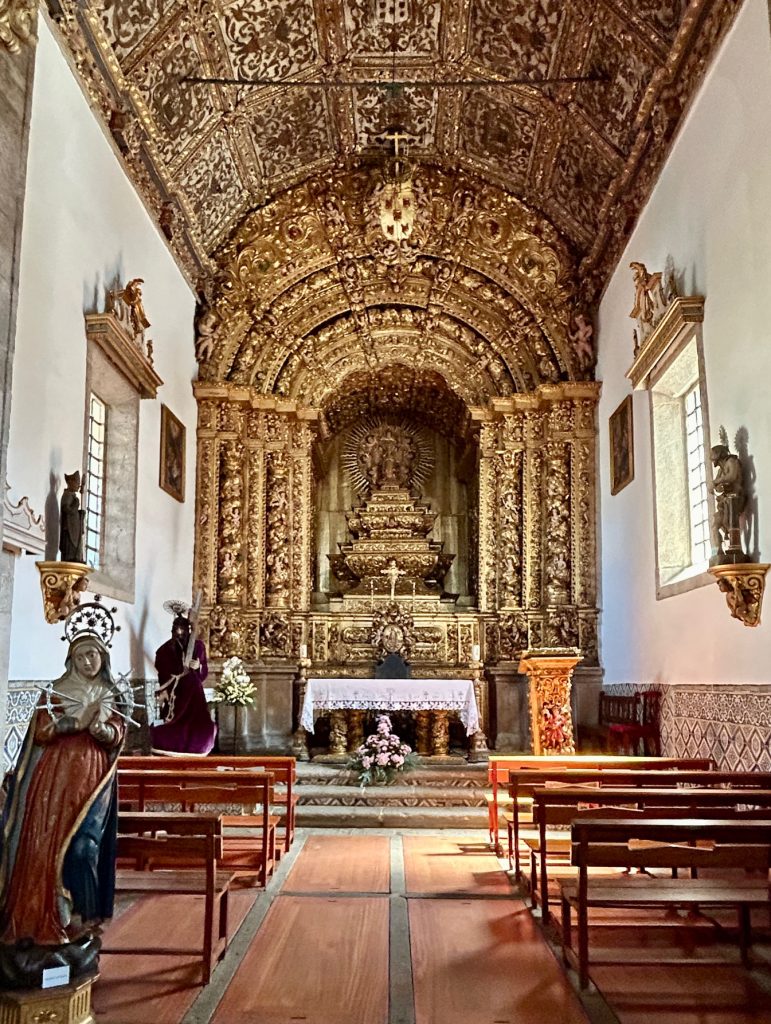
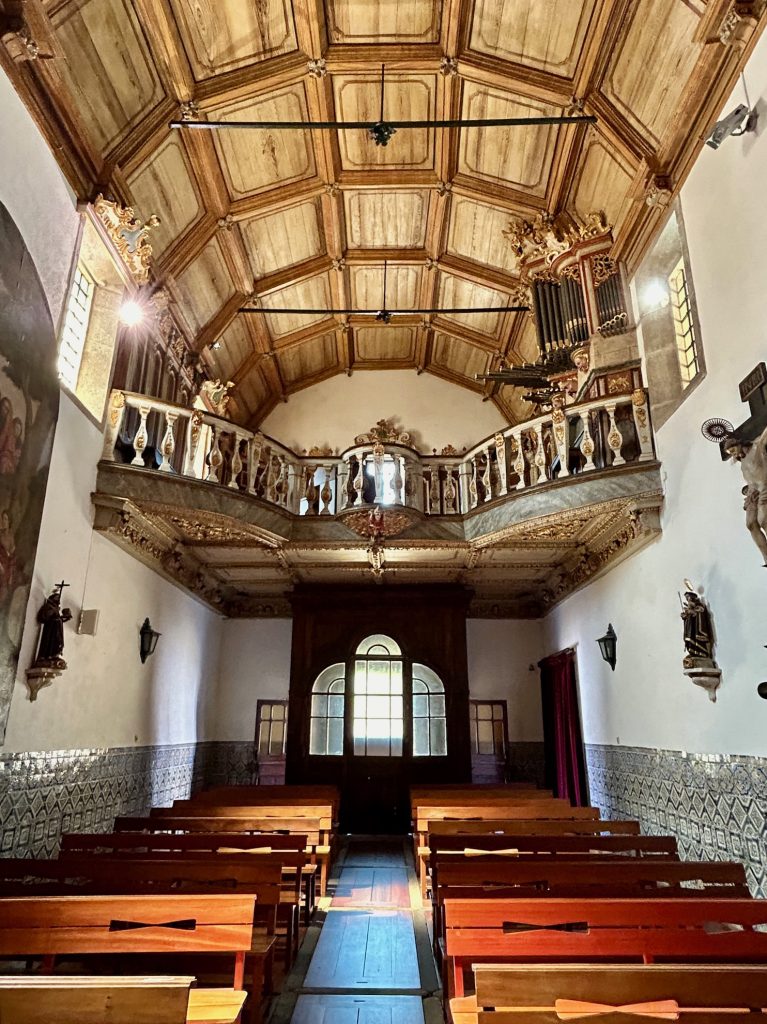
The Praca da Conseilheiro Silva Tores is the beating heart of Caminha and it was strangely stirring just sitting in this lively little plaza over a couple of cups of coffee absorbing the mood of the town. I think we both would have been happy to sit a while longer but we had made the decision to reach A Guarda in time for dinner.
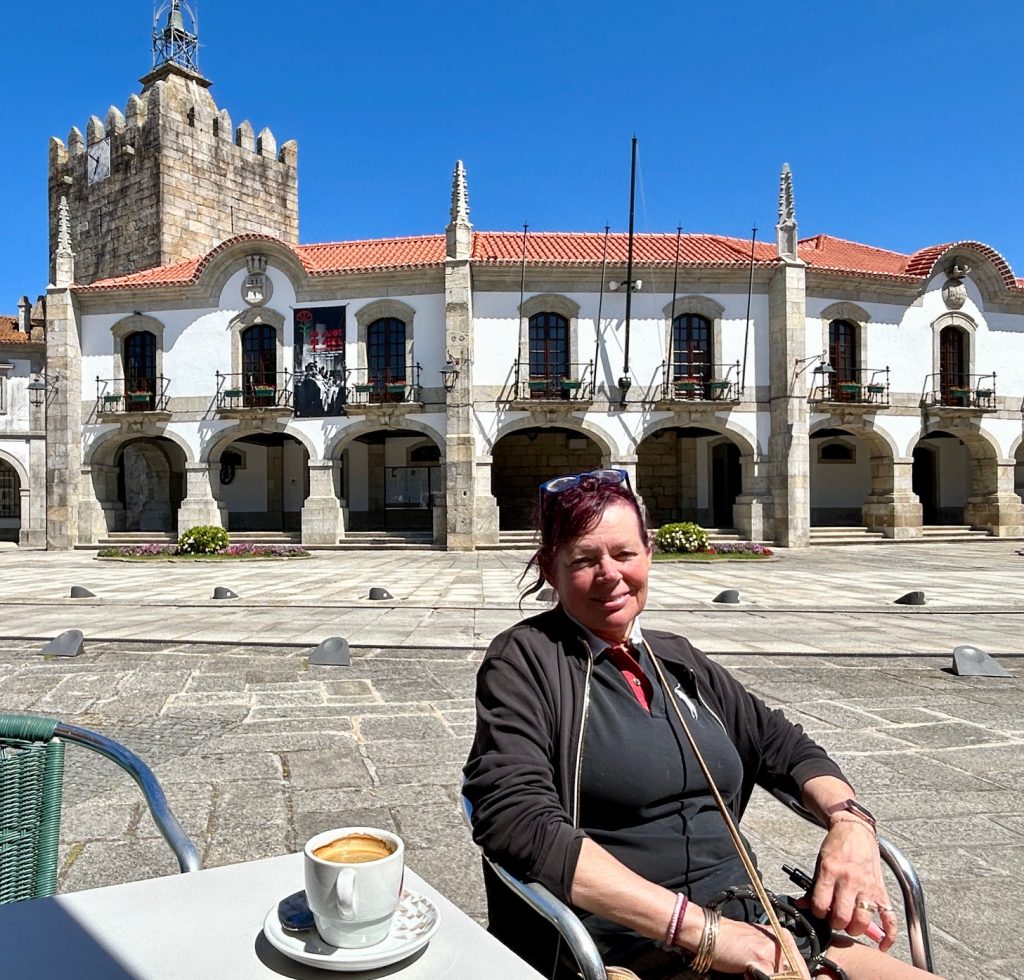
After an hour or so, Vanya moved to check out a couple of the local shops (she is anxious to acquire another, larger, cork handbag for which this area is rightly famous) while I went off to look at the Igreja Matriz de Caminha (the Matriz Church of Our Lady of the Assumption). This 15th century church, made of granite and protected by what remains of the city’s granite walls, is supposedly beautiful inside. Sadly, it wasn’t open during the period of my visit but I was able to enjoy some quite exceptional views across the estuary from the walls.

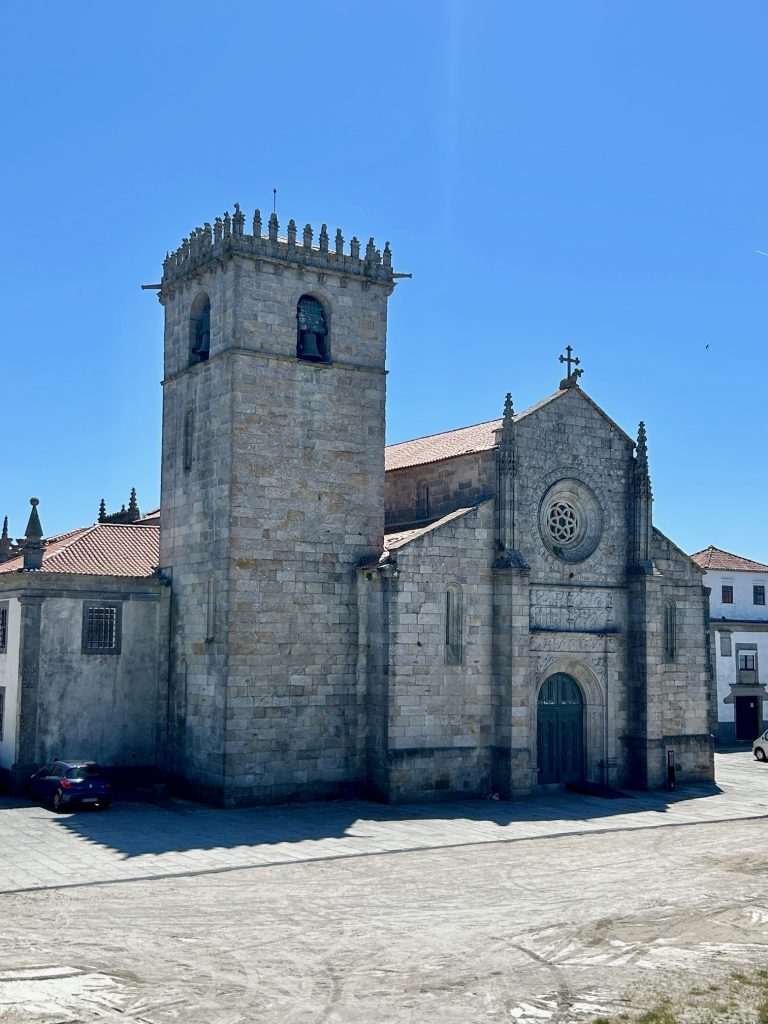
Another interesting sight we stumbled across is the railway bridge over the River Coura (which runs into the River Minho). Alexandre Gustave Eiffel (he who designed and built the Eiffel Tower in Paris) designed and built this bridge. Until then I had no idea that he designed such structures but within a few days I was to stumble over another such construction of his.

We came into Norte this time around primarily to avoid the wet weather which was beginning to threaten Spain. We are really pleased with that decision. We encountered some wonderful places and will definitely return (probably as soon as next September) and; if we return to this particular area, I would be keen to visit Vilar de Mouros and, especially, the Serra D’Arga. The Serra D’Arga is an 825 metre hill with spectacular views, waterfalls (the Penas and the Pincha) and windmills.
On to A Guarda…

